Search
Williams Hot Tip New Code
A from-scratch rewrite of the code for Hot Tip, using my custom OS
Rules:- Spinner is lit when four or more drop targets are down, so it'll unlight once they reset
- Completing drops lights bonus collect at the captive ball
- Lit captive ball triggers off the rollover switch instead of the target, making it easier to hit
- Captive ball lights outlane ball save
- Double bonus and captive ball turn off if collected again
Posted Friday, September 24, 2021
at 06:14 PM
Tags: Blog Post, Custom ROM, Hot Tip, Pinball, Project, System 3-6 OS, ,
Stern Cheetah Tournament Rom V1
Tournament rom mods for Stern's Cheetah
Changes:
- Bonus Collect must be relit via completing #1-5 drops in order
- Cleaned up some logic bugs with flashing arrows on the #1-5 bank
Posted Friday, September 24, 2021
at 06:06 PM
Tags: Blog Post, Custom ROM, Cheetah, Pinball, Project, ,
Stern Dracula Tournament Rom V4
I've been working on a custom ROM for Stern's Dracula for a bit now. This was originally prompted by wanting to remove its 5x bonus rule. In the original ROM, there was no way to earn 5x. You could earn 2x bonus, but 5x could only be gained by random luck on the last ball, when it would alternate between 2x and 5x (once 2x was earned) when the slingshots were hit. This made it very bad for competition play, as a 5x bonus collect could often eclipse whole game scores.
After removing that rule, I decided to make the 5x earnable by the player, and then made some other tweaks to try to rebalance the game now that 5x was in play:
- 5x alternation removed
- 5x achieved by earning 2x bonus again after 2x bonus is already lit (eg, by completing the left 3-bank of drops twice and shooting the loop three times)
- to make this a bit harder (since getting 5x should be harder than getting 2x twice), once you earn 2x bonus via either method, the other method resets (loop resets to first star, or 'light double bonus' light at left 3-bank turns off if it's on)
- made the extra ball worth 25k points, and made it collectable multiple times per ball
- lowered the special score from 100k to 70k (still playing around with this value to try to keep it balanced with the 5x bonus)
- X-Y-Z target progress carry over from ball to ball (per player). Once special is lit, on the next ball you need to hit the Y target again to relight it.
- free play
- sped up 5x bonus collect
If anyone would like to test this or has any further suggestions, send me an email
System 6 MPU Repair Log
When I got it, it was a clean board that worked a few months ago. Game stopped booting, so owner had rom and 5101 sockets replaced. Repairer says board booted on bench (LEDs turned off), but when installed in game it still didn't reach attract mode.
- I replaced the (still original) CPU and RAM (IC13 only) sockets, but that made no difference
- Installed Leon's test rom (flashes LEDs without using RAM, etc), but it didn't boot either
- Tried Andre's test rom (tests all chips without using RAM, etc), also didn't boot.
- Checked all the inputs of the ROM and PIA chips with logic probe, none were stuck.
- Replaced data line buffers (IC9+10) with jumpers in case they were a problem, but no difference.
- Found out Andre's test rom also strobes A15 line along with LEDs (in case the PIA outputs or LED chip are broken), so I checked that but it also wasn't working. At this point I reason that the problem must be between the CPU and ROM (both known good).
- Although all the address and data lines are strobing, it's still not working, so one must be strobing wrong somehow.
- I write up a quick test rom comprising nothing but infinite loops, reasoning that this will keep the program counter (and thus the address lines since no other accesses are happening) constant. Installed in a known good board, it works as expected. Reading off the address lines one by one reports the address $7800, which is the first byte of the rom.
- When installed in the problem board, A9-11 are low (as expected) but every line below them is strobing. I can't really explain this, why would the CPU be jumping all through a 512 byte subset of memory?
- I Remove the remaining RAM (IC16) and PIA, but nothing changes
- Since the data on the data lines should now be predictable (just reading the entry address, and then that address itself repeatedly), I reason that I should be able to pick it up with a logic analyzer. With mine hooked up to the 8 data lines, I record them at 24MHz (for overkill), and examine them, but I don't see any of that data. # - What I do note though is that at the beginning of the boot, D6 seems to wobble a bit while the rest don't. I don't know if that wobble is normal, but the one reliable thing about any pinball related troubleshooting, I've found, is that if there's 8 of a thing they tend to act the same, so I suspect something is up with the D6 line
- I take out the CPU and rom, meaning that, per my look over the schematics, nothing should be attached to any of the data lines now (and thus they should all be floating), but when I apply power, I still read a signal on D6.
- Something must be shorted somewhere, so I begin checking the resistance between D6 and every other signal on the board, eventually finding that it has continuity to A6. All that's left now is to actually find it
- I begin at the source of D6 (IC9), and visually follow the trace all around the board, looking for any potential problems, but am unable to find any. Usually a short is between two adjacent pads of a chip, but looking at the various chips, none have A6 and D6 near each other. What I do realize though, is that the RAM chips have them directly across from each other. The chips are too wide to have a short that way, but the way these boards are routed with both chips next to each other, they squeezed the signals from the left side of the chip between the right side pads to reach the next chip over, which means the trace gets awfully close to the pads. To make matters worse, due to their cheap board manufacturing process, instead of masking off individual pads for soldering, they just did the whole strip of pads, which includes the traces running between the pads.
- Although I'm unable to see a problem, this area seems suspect, so I desolder the sockets and confirm my theory: there's a tiny bit of solder bridging the pad of D6 to the A6 trace running next to it.
- After removing the solder, the board boots fine
Custom OS for Williams System 3-6 Pinball Machines
Many older games from the dawn of computer based ('solid state') pinball have some pretty basic rules, and I've often pondered hacking the roms to improve them, but reverse engineering assembly from scratch isn't really my idea of fun so I never really got into it. Driving home one night though, I got to thinking: the hardware for these machines is pretty simple, the schematics are available (and even have memory addresses!), would it really be that hard to just write a brand new rom from scratch? Sure, I didn't know assembly or anything, but it couldn't be that hard!
So I sat down with a copy of the Motorola 6800 reference manual, some data sheets, the schematics, and a copy of PinMAME to debug my code in, found where the entry point/address was, and started coding.
Long story short, it actually was pretty easy! The williams hardware was designed for simplicity from a programming standpoint (though that ended up making the boards overly complicated and unreliable), all the I/O was easy to work with and within a few days I had simple drivers written for all the different peripherals and a basic 'OS' for a game that could control lights, display scores, and jump into a callback table when a switch was hit by the ball.
Programming a game itself using this would prove a bit more complicated of course, due mostly to timing/threading issues (of course, I just had to write a custom threading system for this 1MHz processor), but nothing extreme. A few months later, and I had a brand new rom for my Hot Tip, with many fancy new features which I showed off in a video here
I didn't document the whole process very much, but if you'd like to know more, or would like to try to write your own new game rom using this as a basis, drop me a line!
The full source code and roms are available at http://github.com/zacaj/williams-sys-3-6
Arduino Pinball Restoration
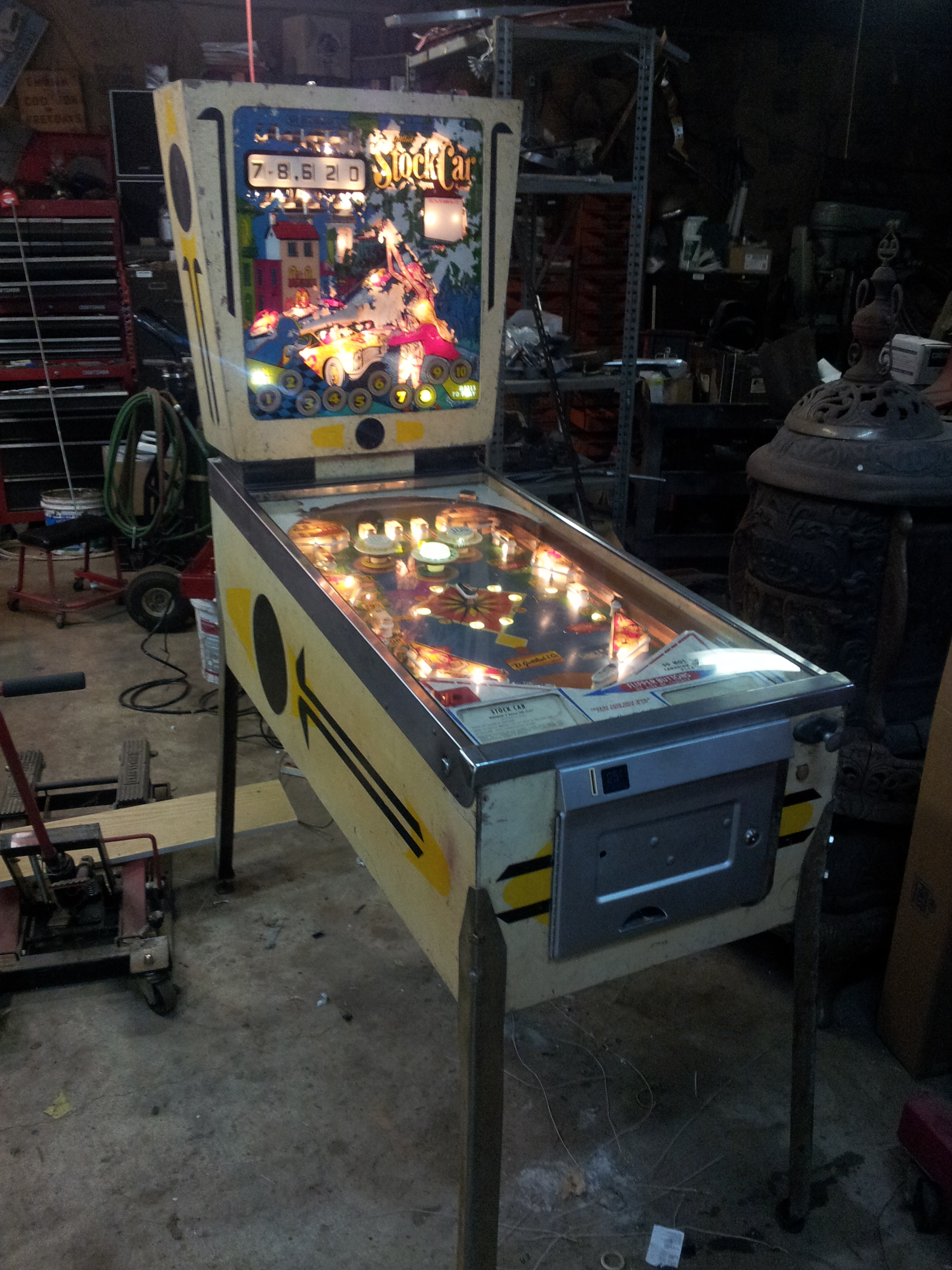
I found a pinball machine sitting disassembled on the floor of a leaky shed and brought it home to tinker with. The mechanisms and electronics inside were all rusted solid, as was most of the metal on the outside. The backglass had lost half its paint, and one entire side of the machine was covered in mold.
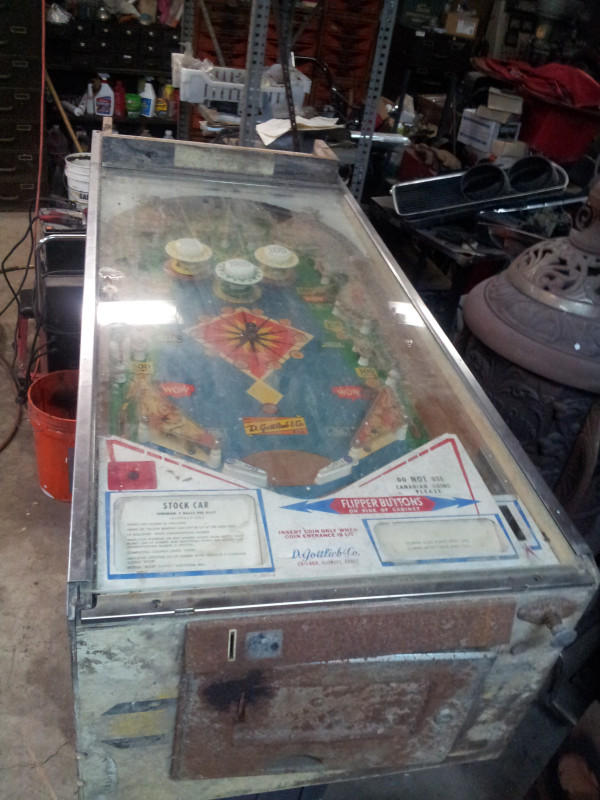
I'd originally planned to disassemble the machine for parts, but after I got the glass off I found that the playfield itself was in amazing condition. With the glass to protect it and no light, it had survived unscathed, and I couldn't bring myself to tear it up. Instead, I decided to teach myself some electrical engineering and wire it all up to an Arduino.
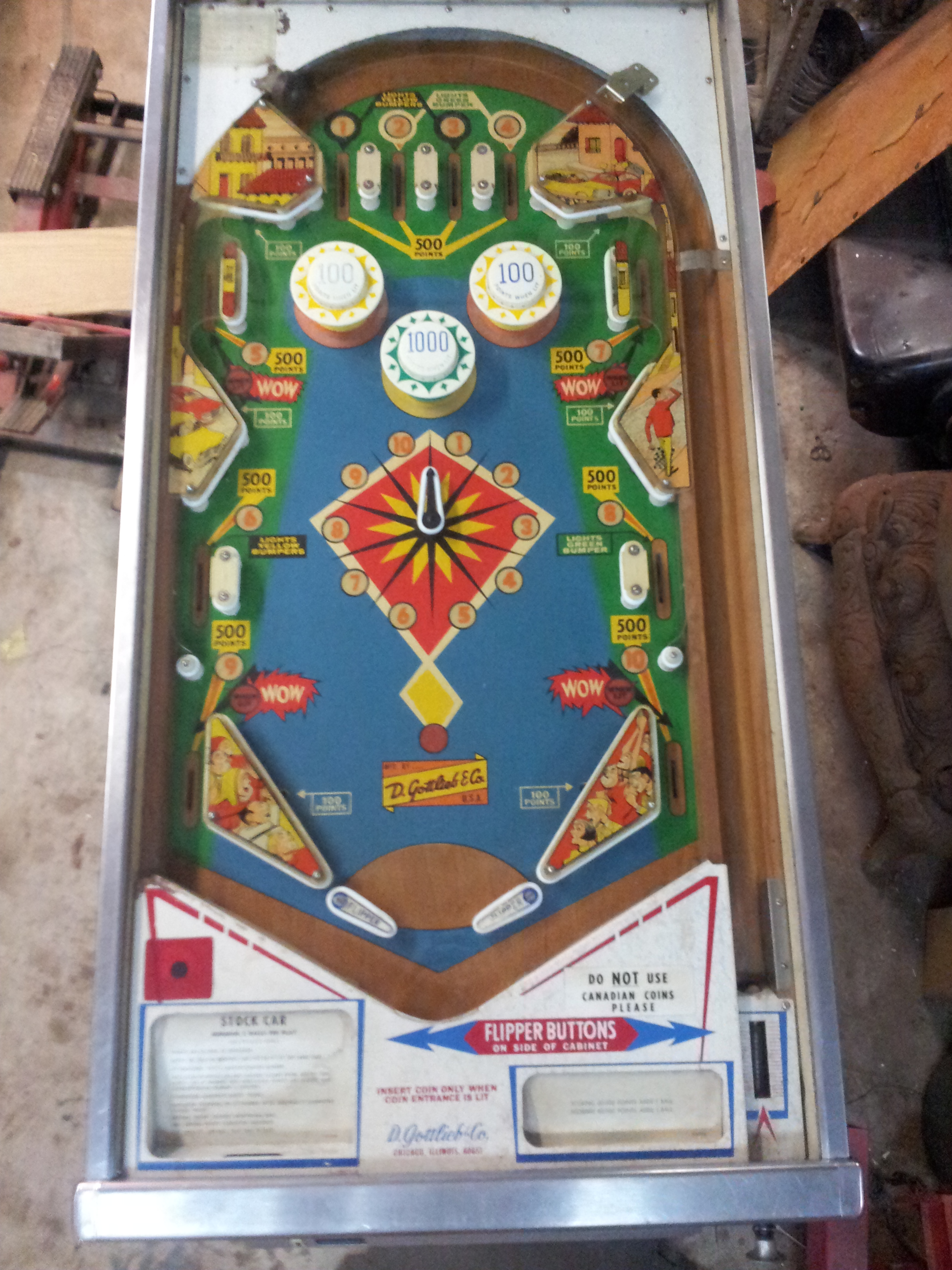
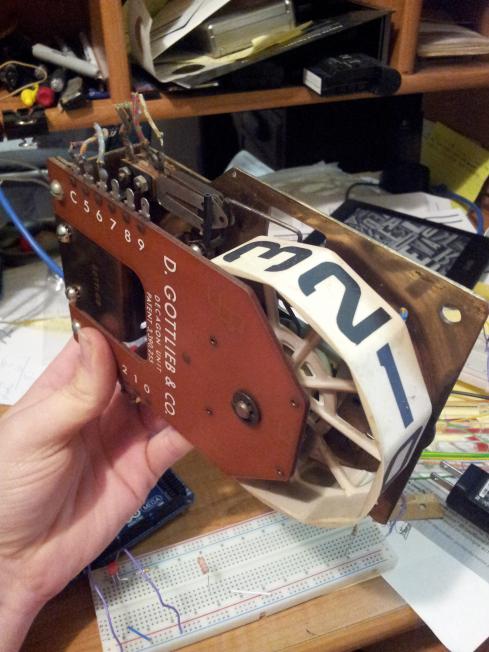
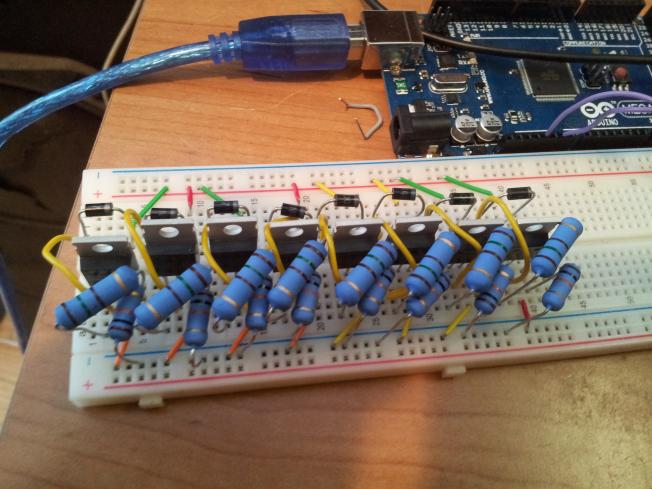
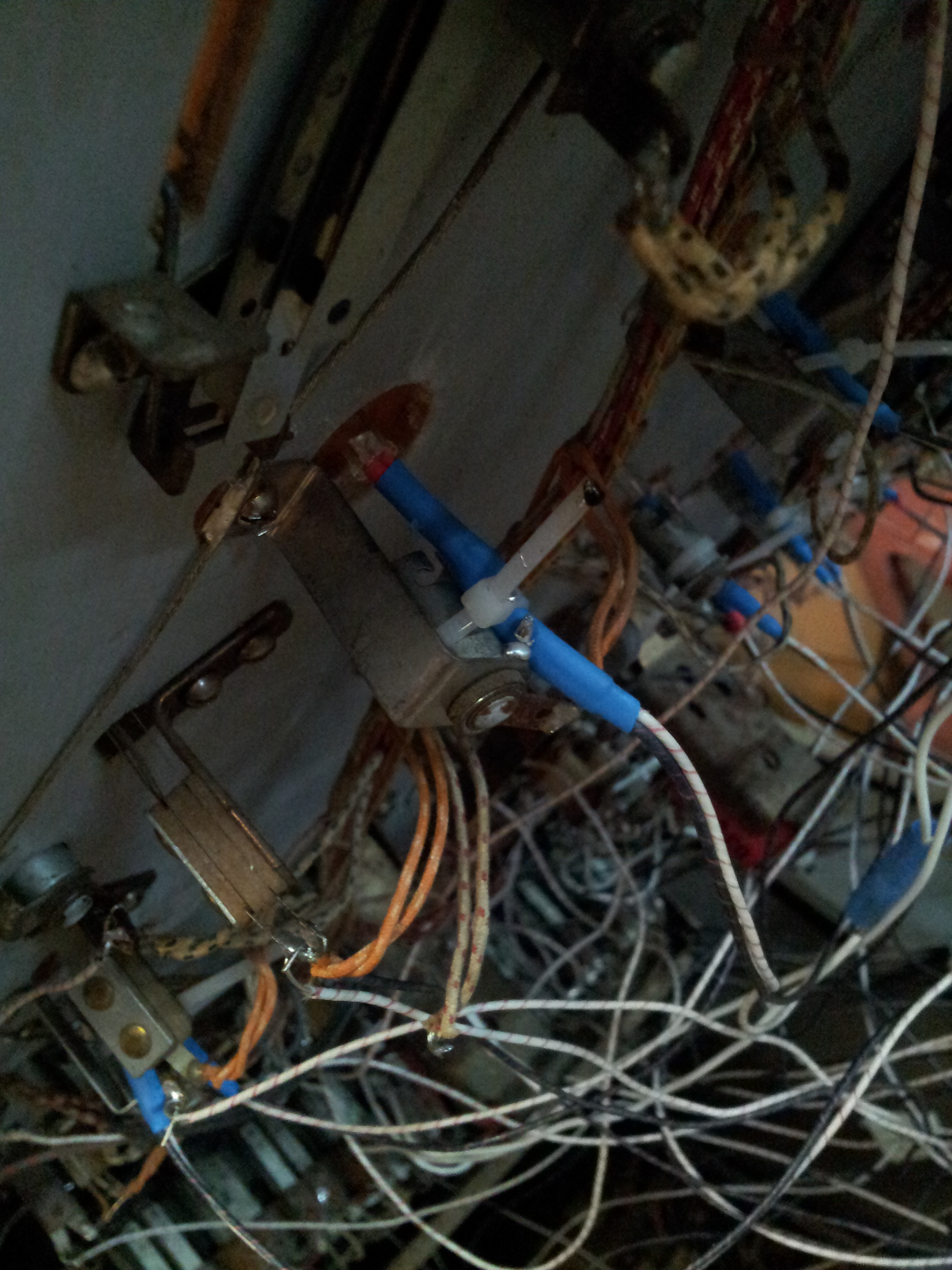
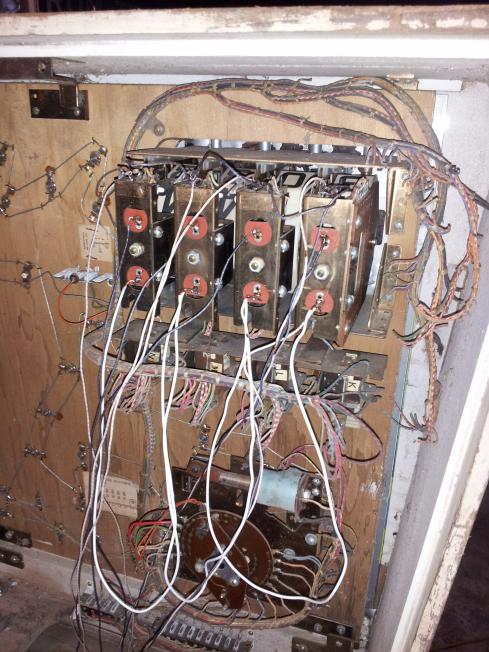
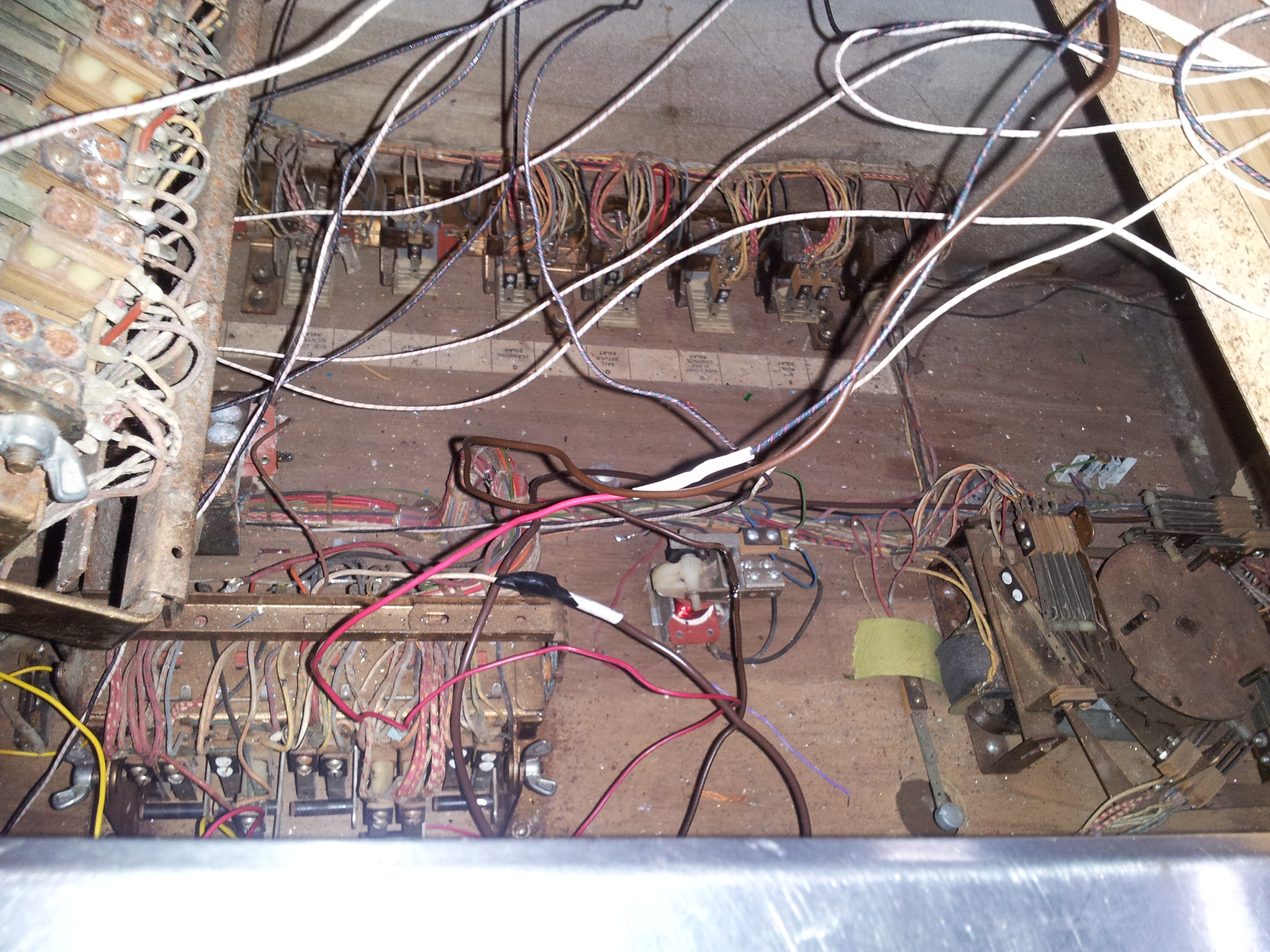
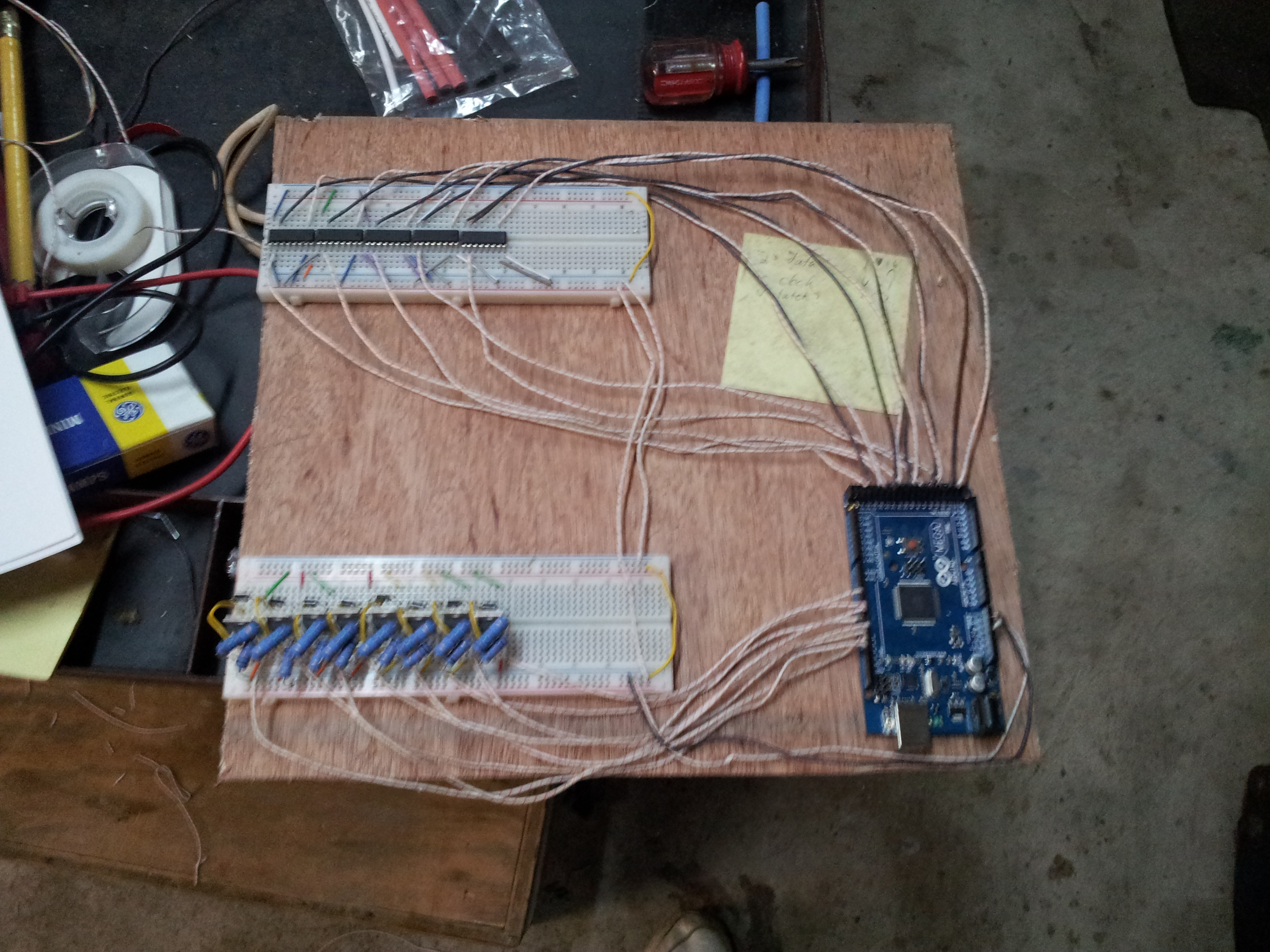
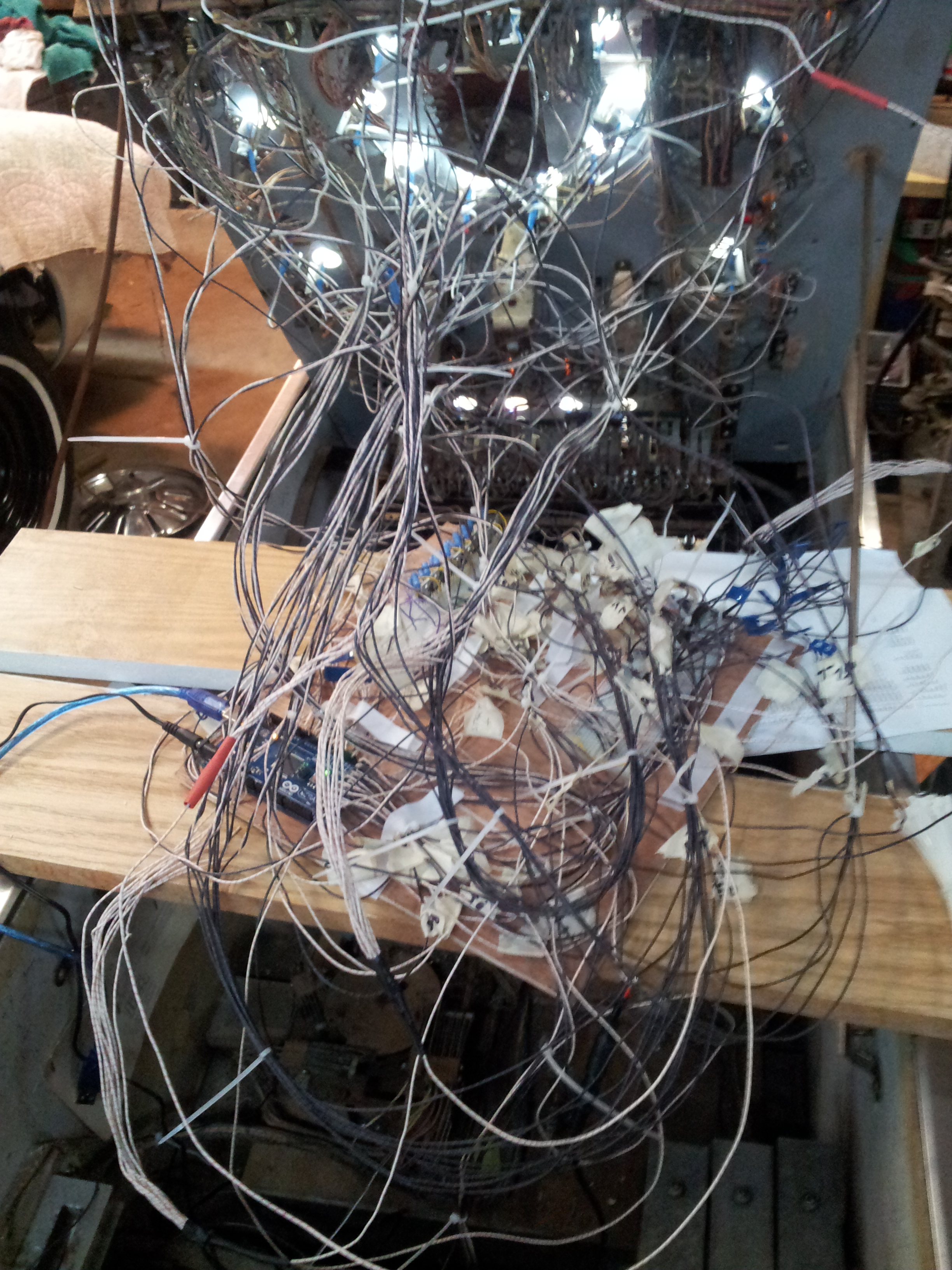
I managed to clean off the mold and dirt using a combination of extremely toxic solutions. The door and plunger needed to be sand-blasted and repainted. Luckily, the rails along the edges were stainless steel, so they only needed a quick cleaning.
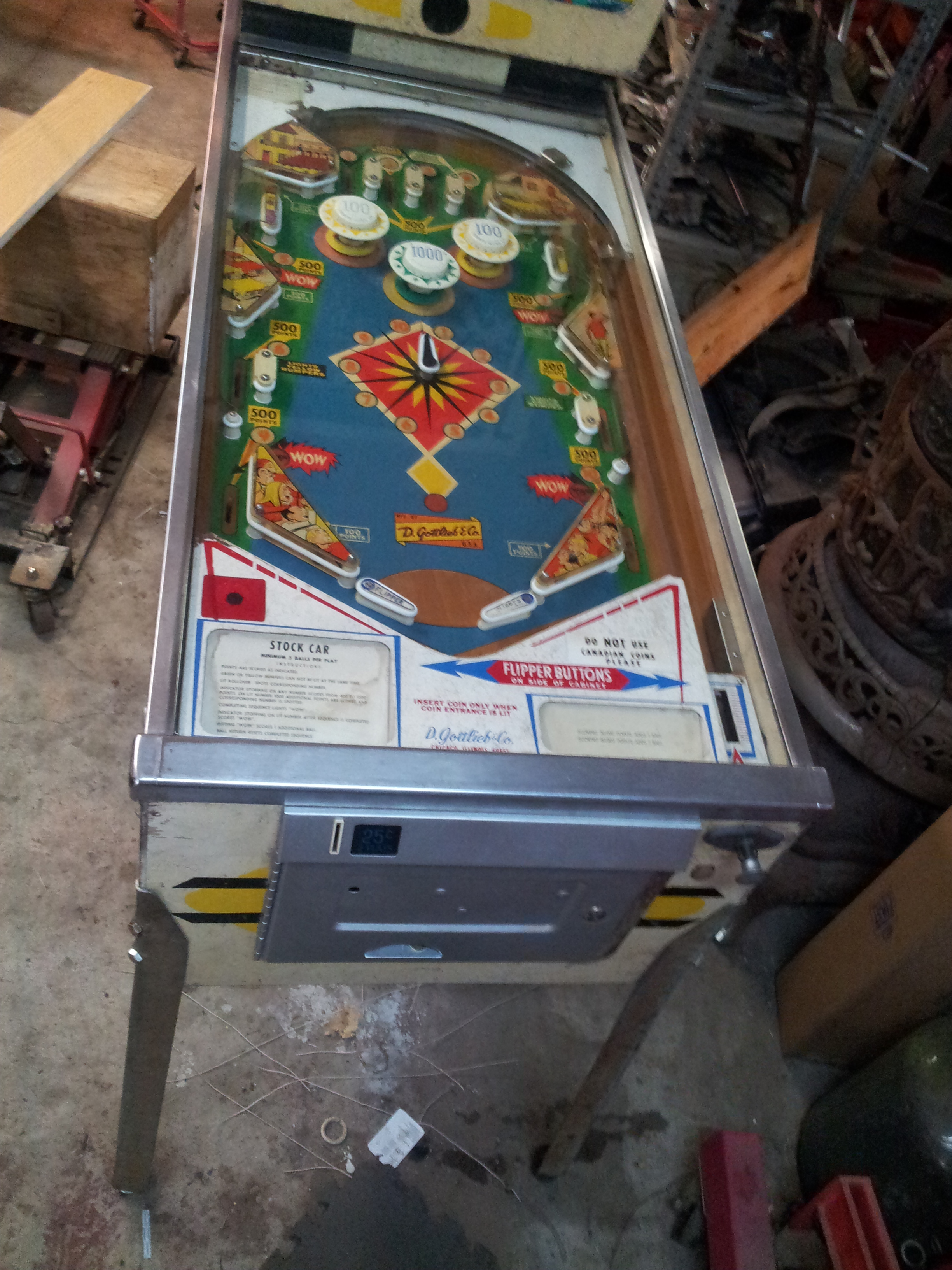
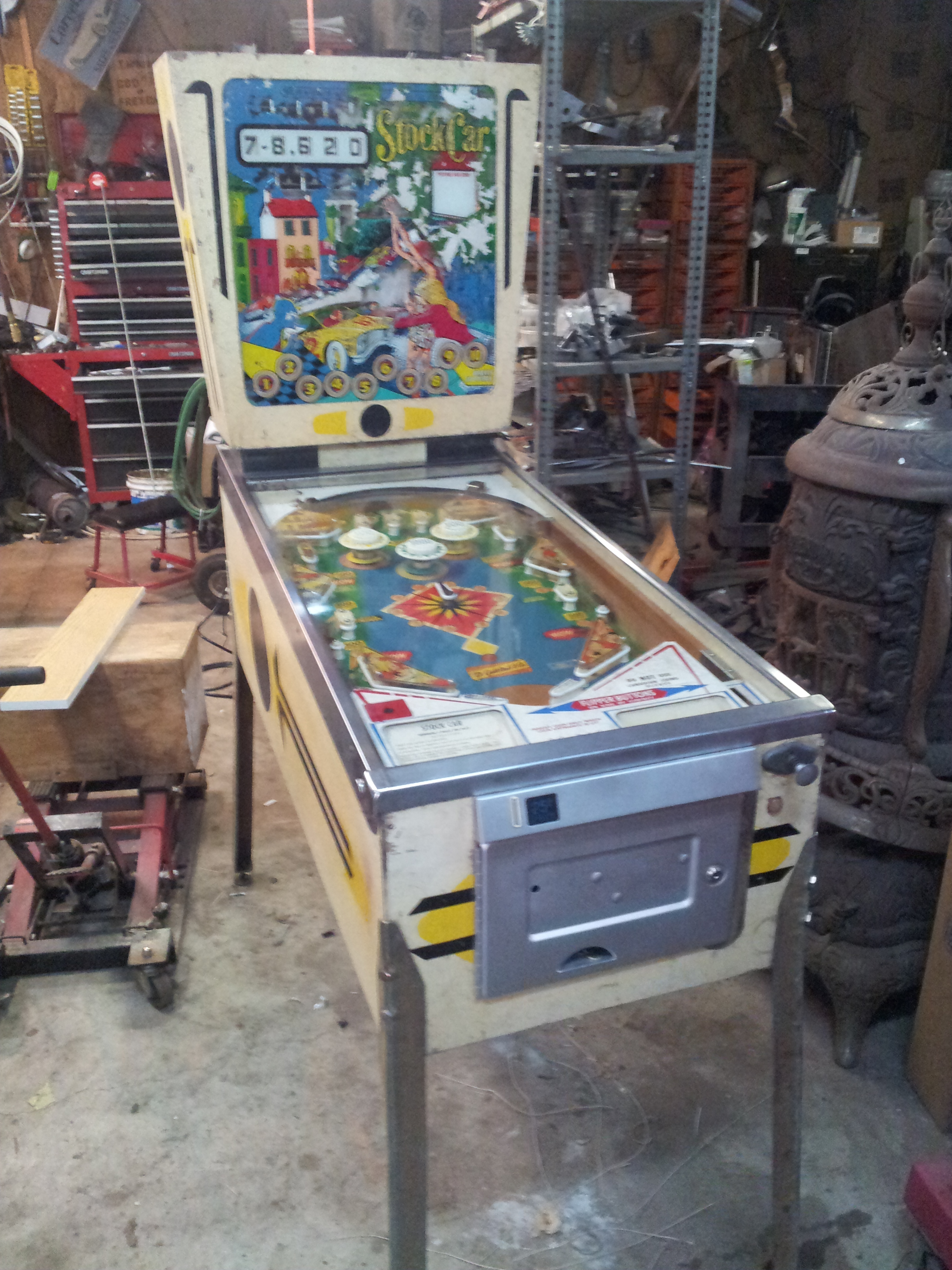
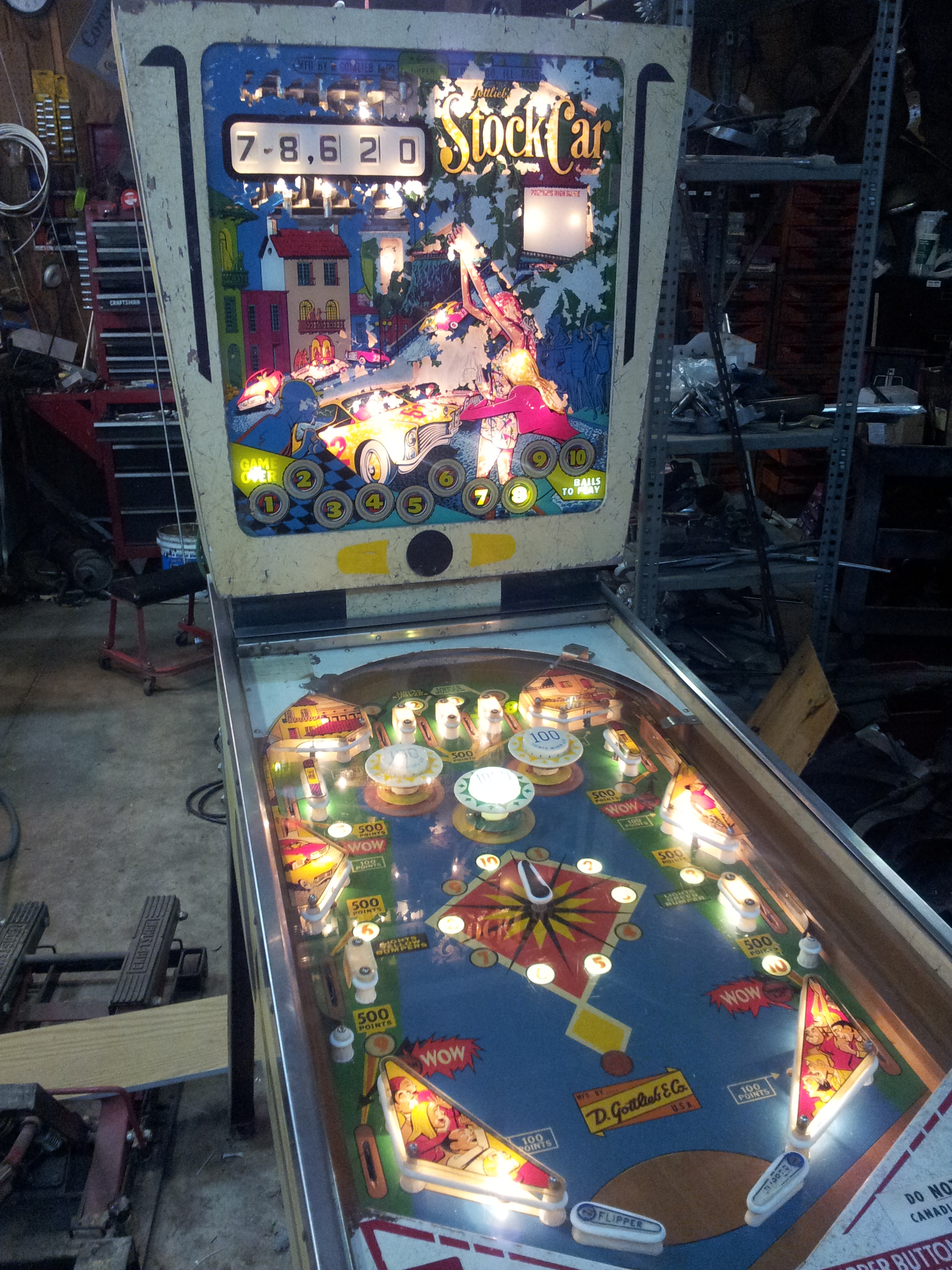
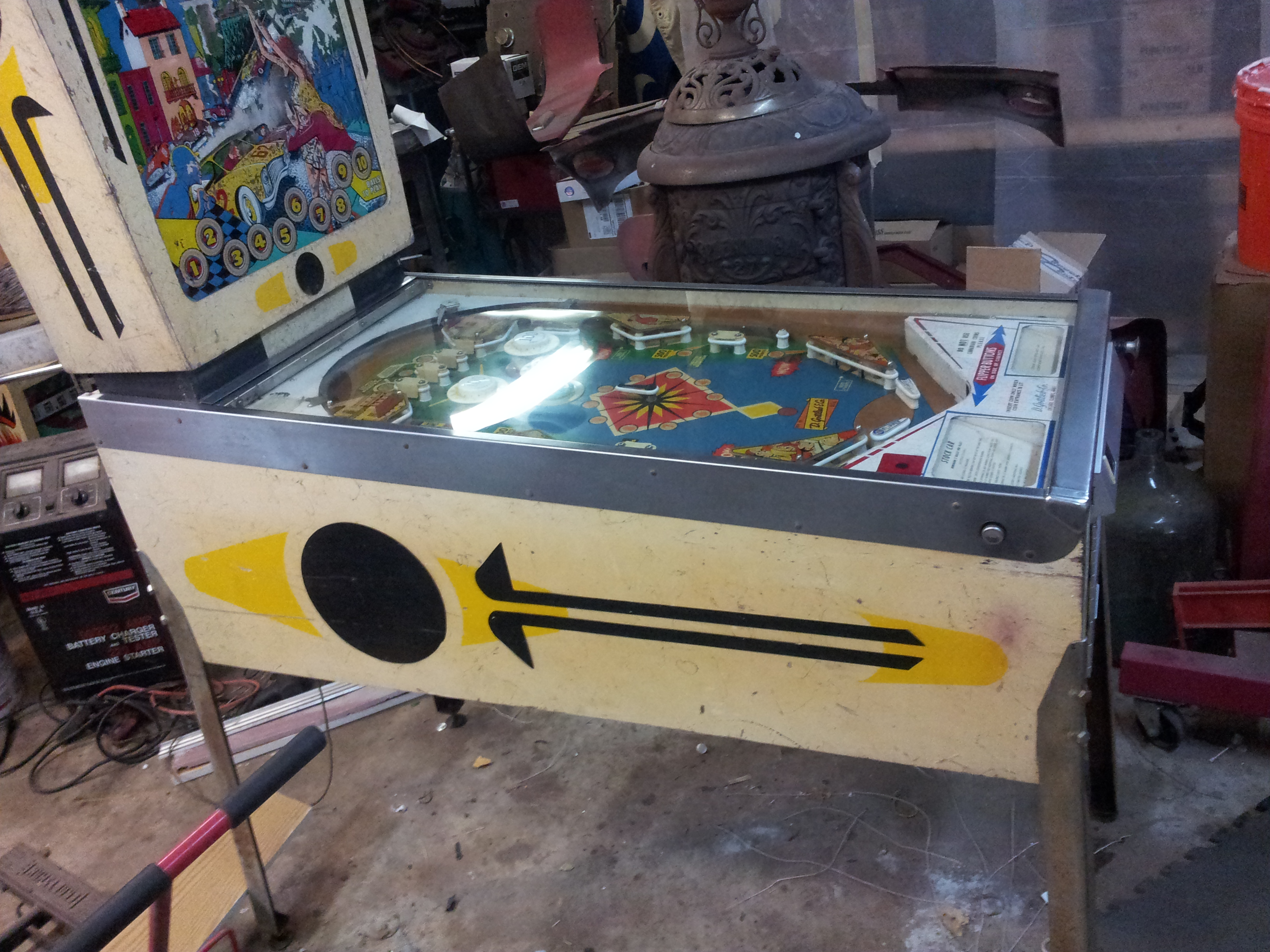
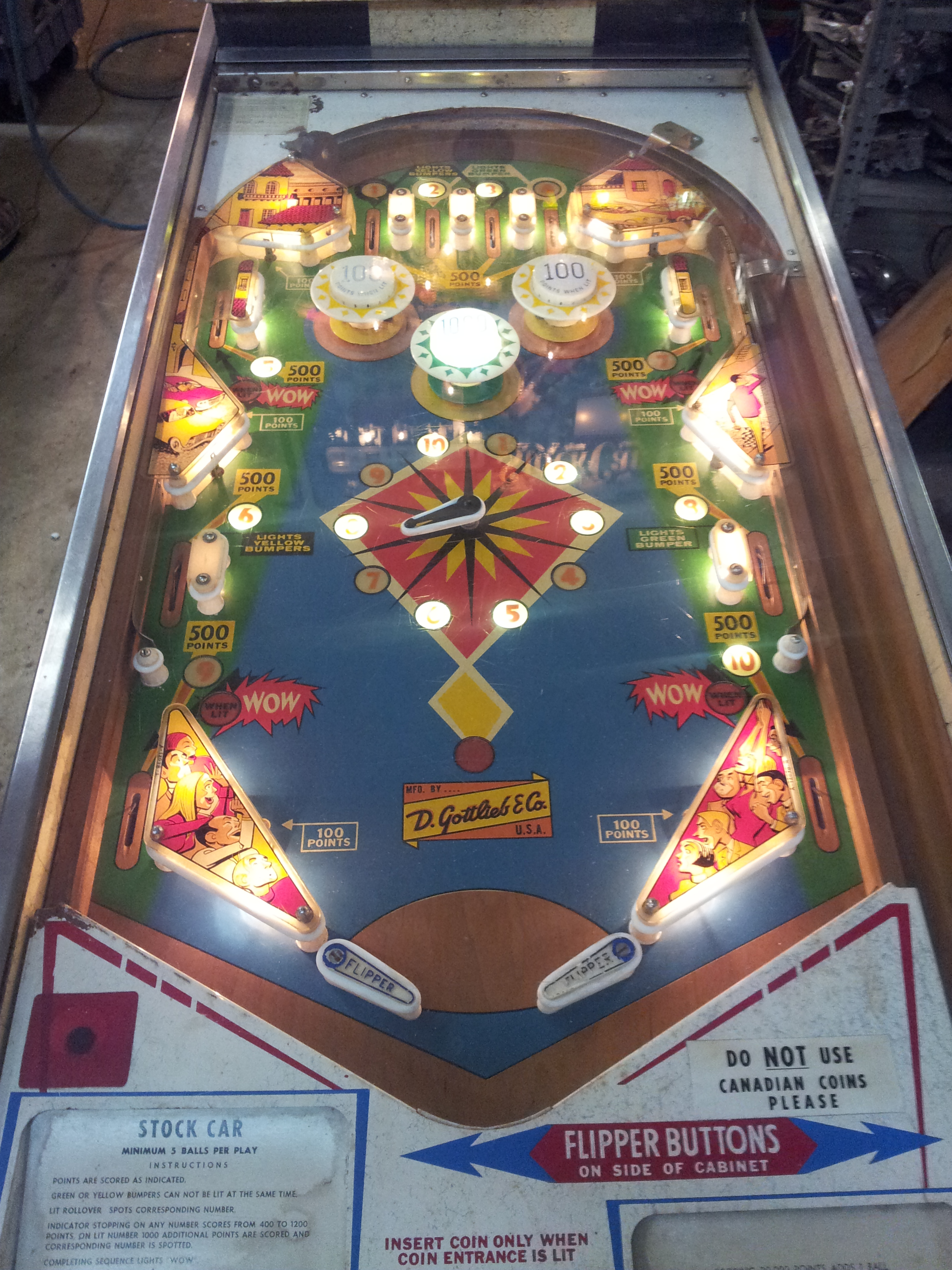
If you've got any questions, feel free to email or tweet me; I'll be happy to elaborate
Posted Sunday, April 01, 2018
at 06:06 PM
Tags: Blog Post, Pinball, Stock Car, Arduino, Electronics, Project,
Arduino Pinball Repair, Pt. 1
I got a hold of an old EM Stock Car pinball machine a few weeks ago with the hopes of repairing it, but my first attempt ended in failure. The machine had been sitting in a damp, moldy garage against a wall, under a leaky window for at least twenty years, and it was beyond repair. About a third of the inside was covered in mold, all the moving parts were stuck, all the metal was rusted, and the back glass was damaged beyond repair.
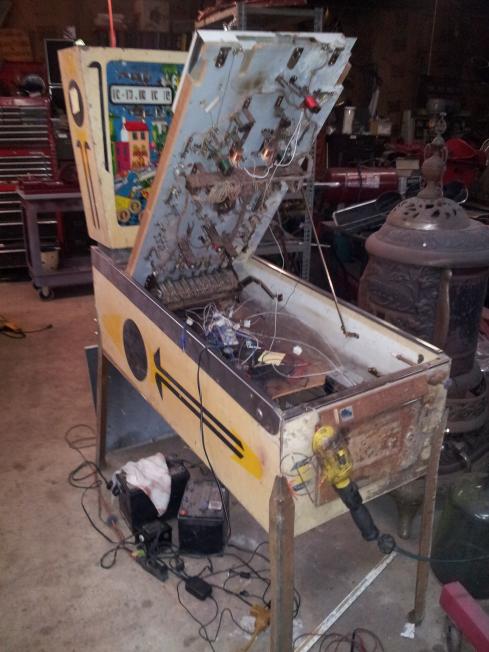
So instead I realized that this would be a good way to use an Arduino. I could just plug one into all the inputs and outputs of the machine and then program it to react in the same way all those complicated and broken electronics would have. I ordered an Arduino Mega, which has 54 I/O ports, and then got to work investigating how complicated it would be to interface it with the pinball machine.
Some quick testing revealed that all the moving parts of the pinball machine ran off 25V AC, which posed my first problem, as the Arduino runs off 5V DC. Asking about how to fix this online wasn't much help; the experts couldn't even agree on whether an AC coil would work with DC. Being the pragmatic and cautious individual that I am, I of course took the rational route, and hooked two old car batteries up (12V DC each x2=24V DC) to a solenoid to see if it would work. (It did). Of course, this still left the big problem, which is that even if the coils would work off DC, they still needed 25V.
The answer, of course, was to use a transistor, or a MOSFET to be precise (I still haven't figured out the difference), to switch the high power current with a low power current from the Arduino. Three burned out husks of transistors later, I'd figured out how they worked, and rigged up this insane hodgepodge of circuitry to control the eight solenoids in the machine.

After an arduous day soldering wires to all the components and hooking them up, I now have control of all the moving parts of the machine from my Arduino.
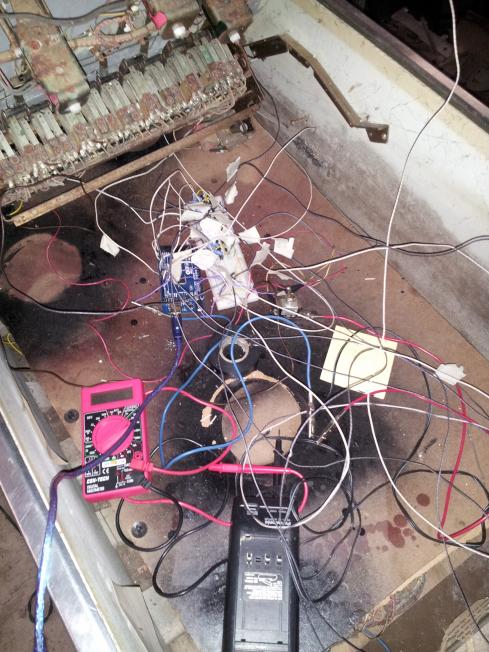

Tomorrow, I get to start working on wiring all the rollovers to the Arduino so it can begin actually scoring points
Posted Sunday, April 01, 2018
at 06:06 PM
Tags: Blog Post, Pinball, Stock Car, Arduino, Electronics, Project,
Pinball, pt 2: Cabinet, Playfield Experiments
Some ugly Spring Break artwork wouldn't do, so I spray-painted the cabinet black:
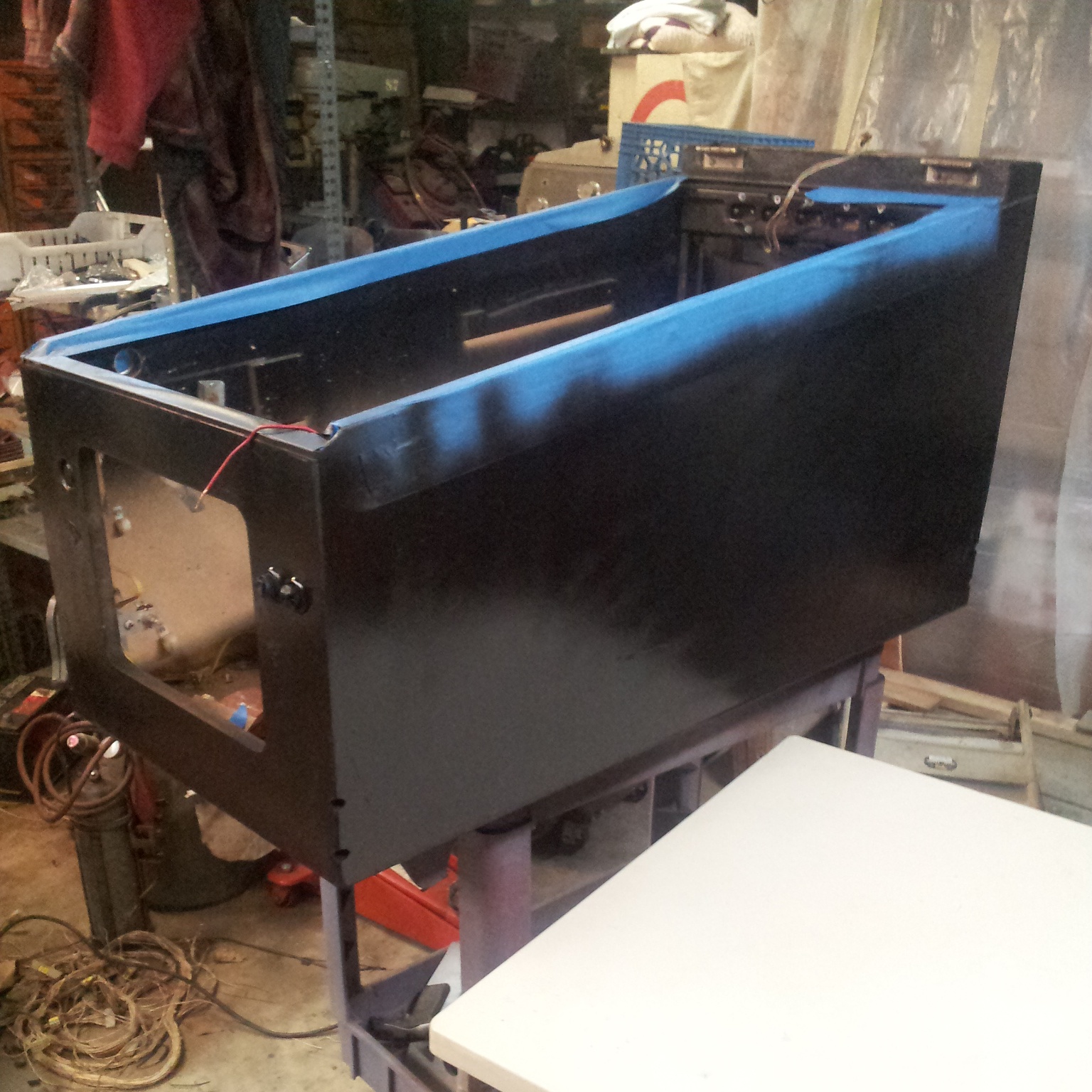
The same went for the head:
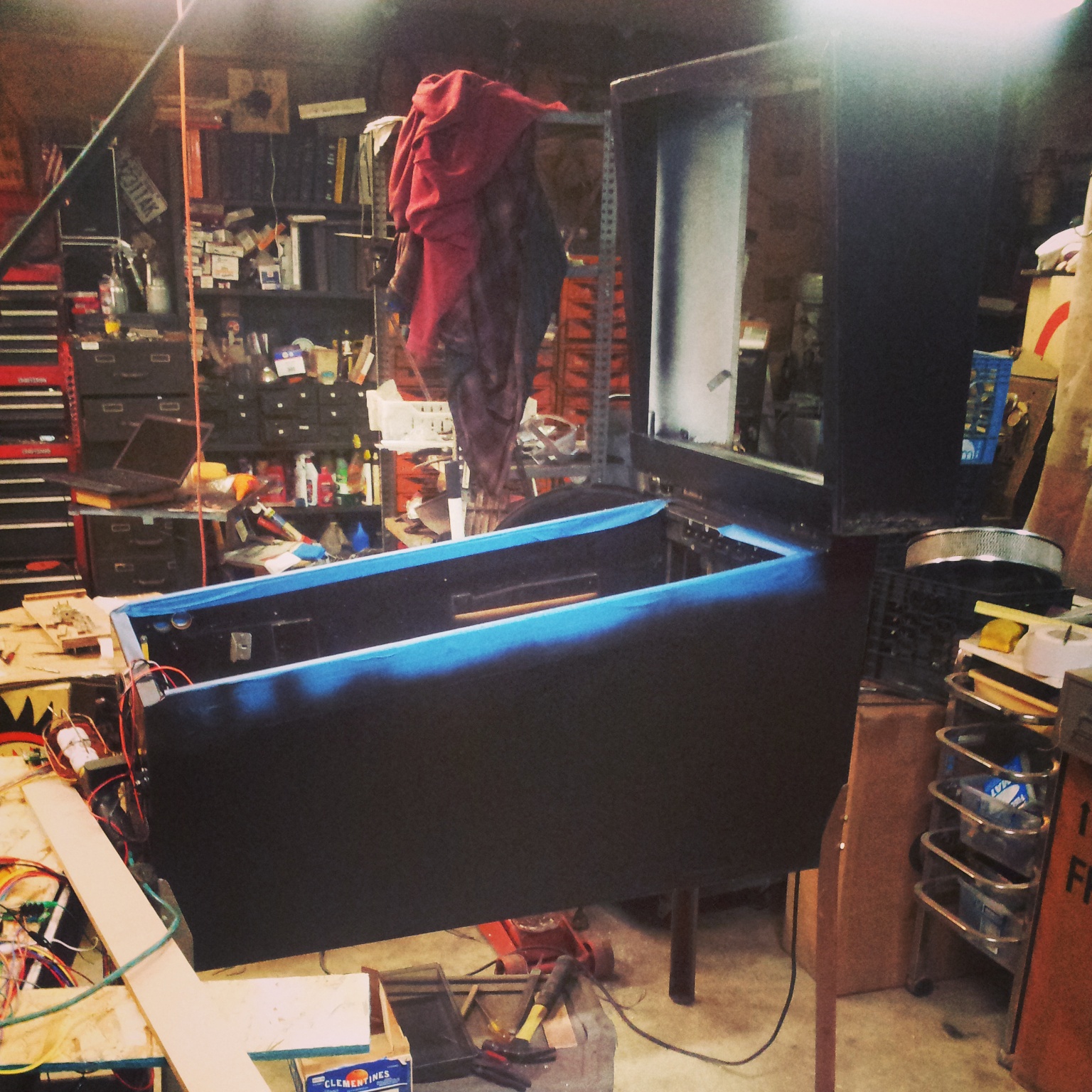
I've never understood pinball machines that couldn't think of a use for more buttons, so I put a second set in:
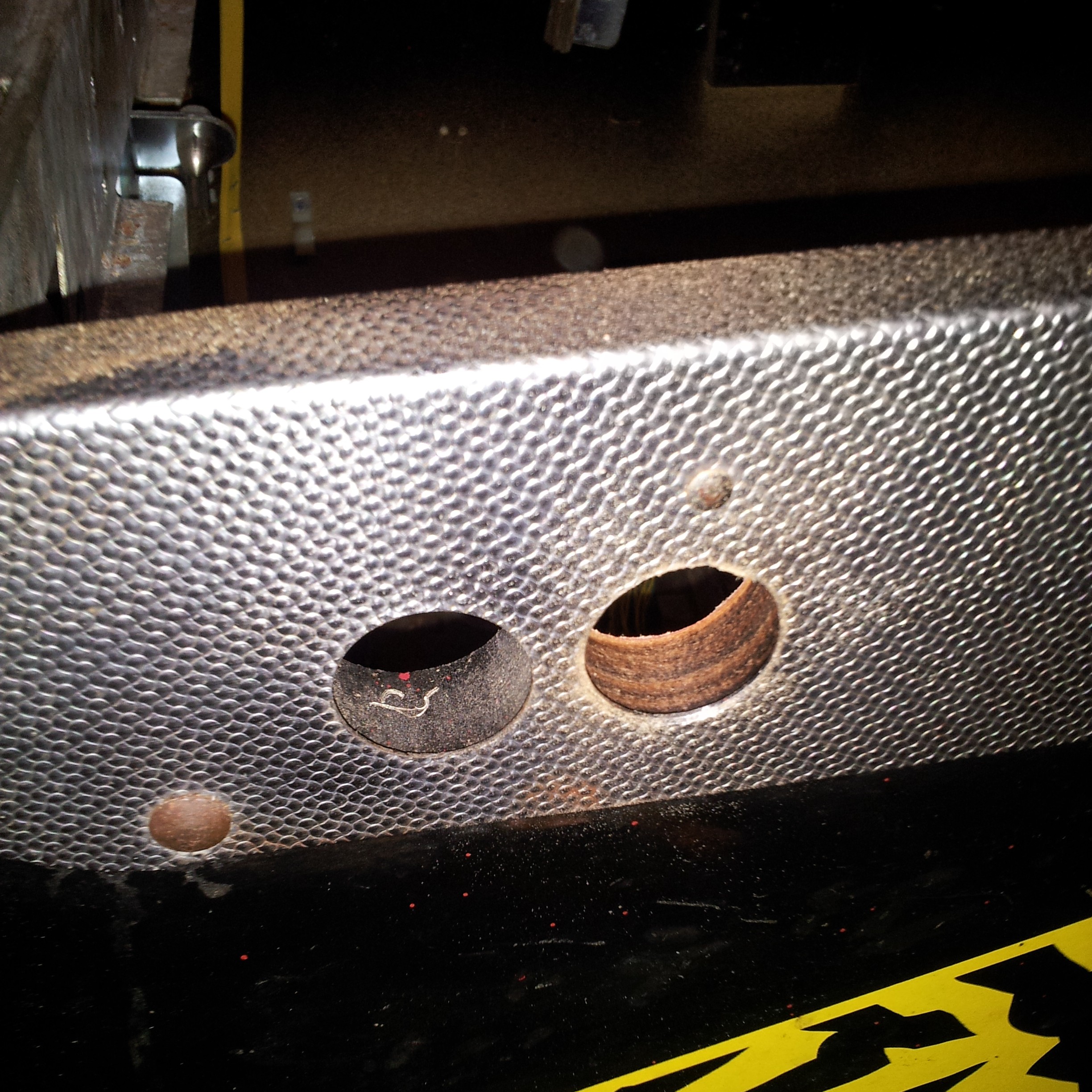
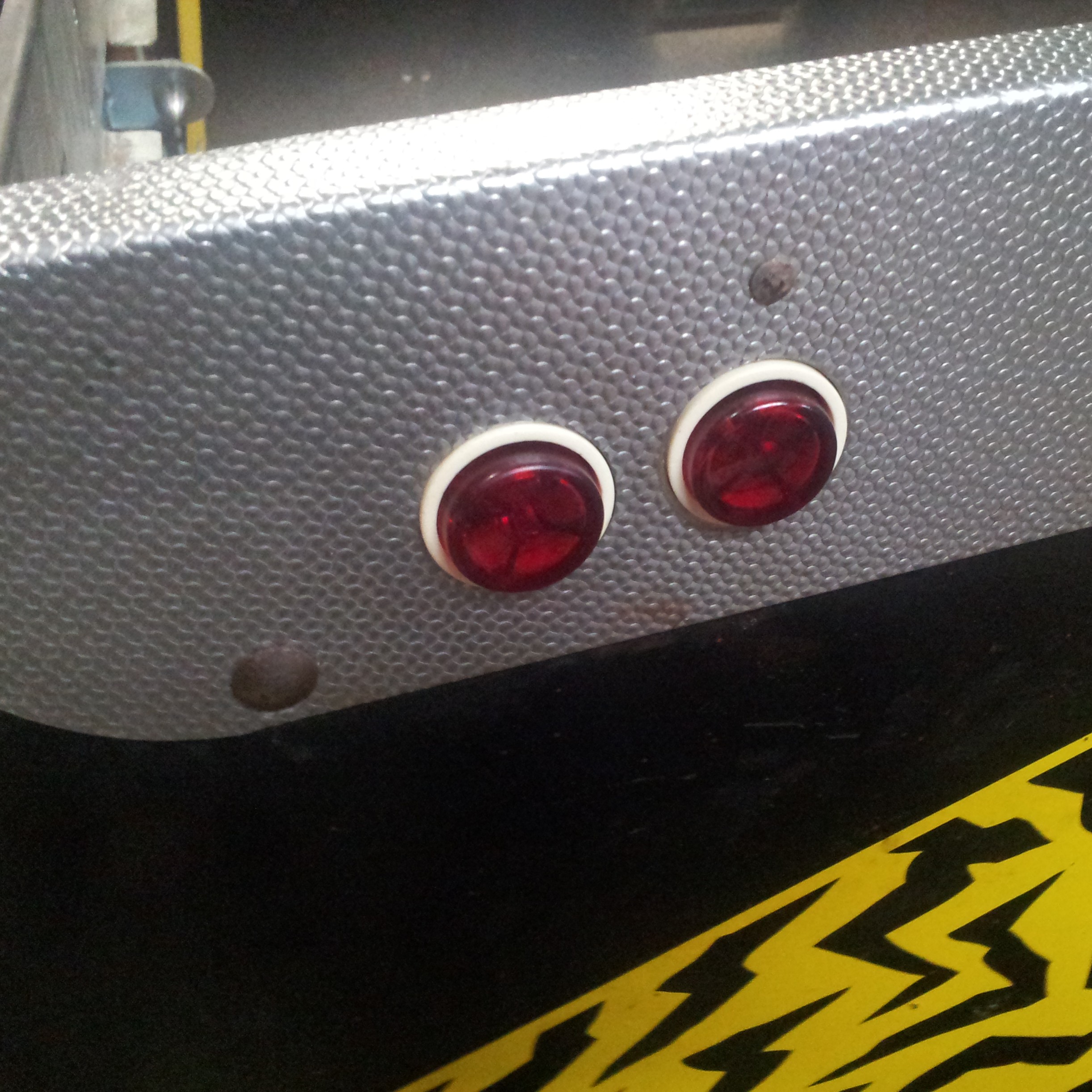
I picked up a sheet of 0.5" MDF at Home Depot, and lightly drew out my layout
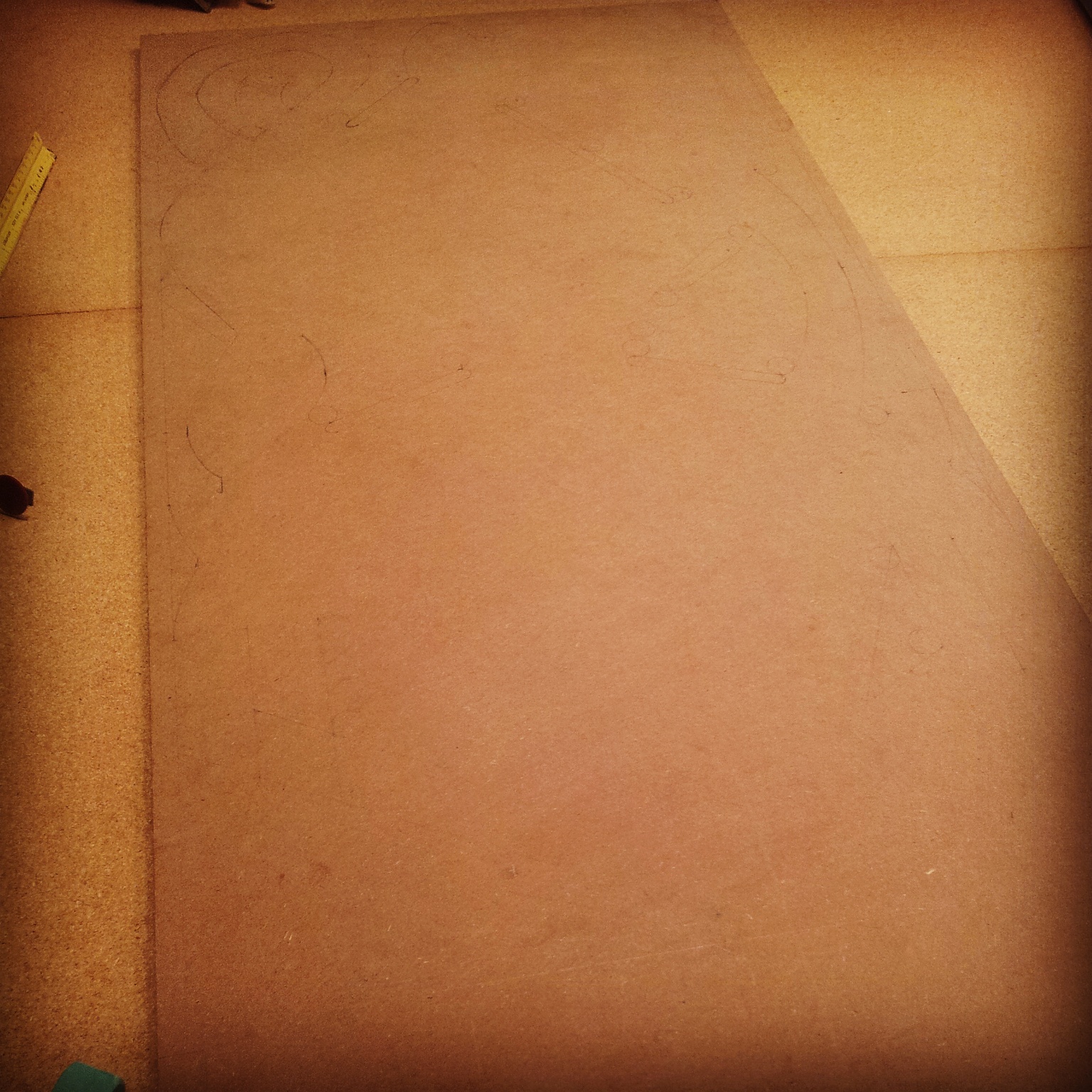

I also used leftover scraps from cutting it to the right size to experiment with mounting components
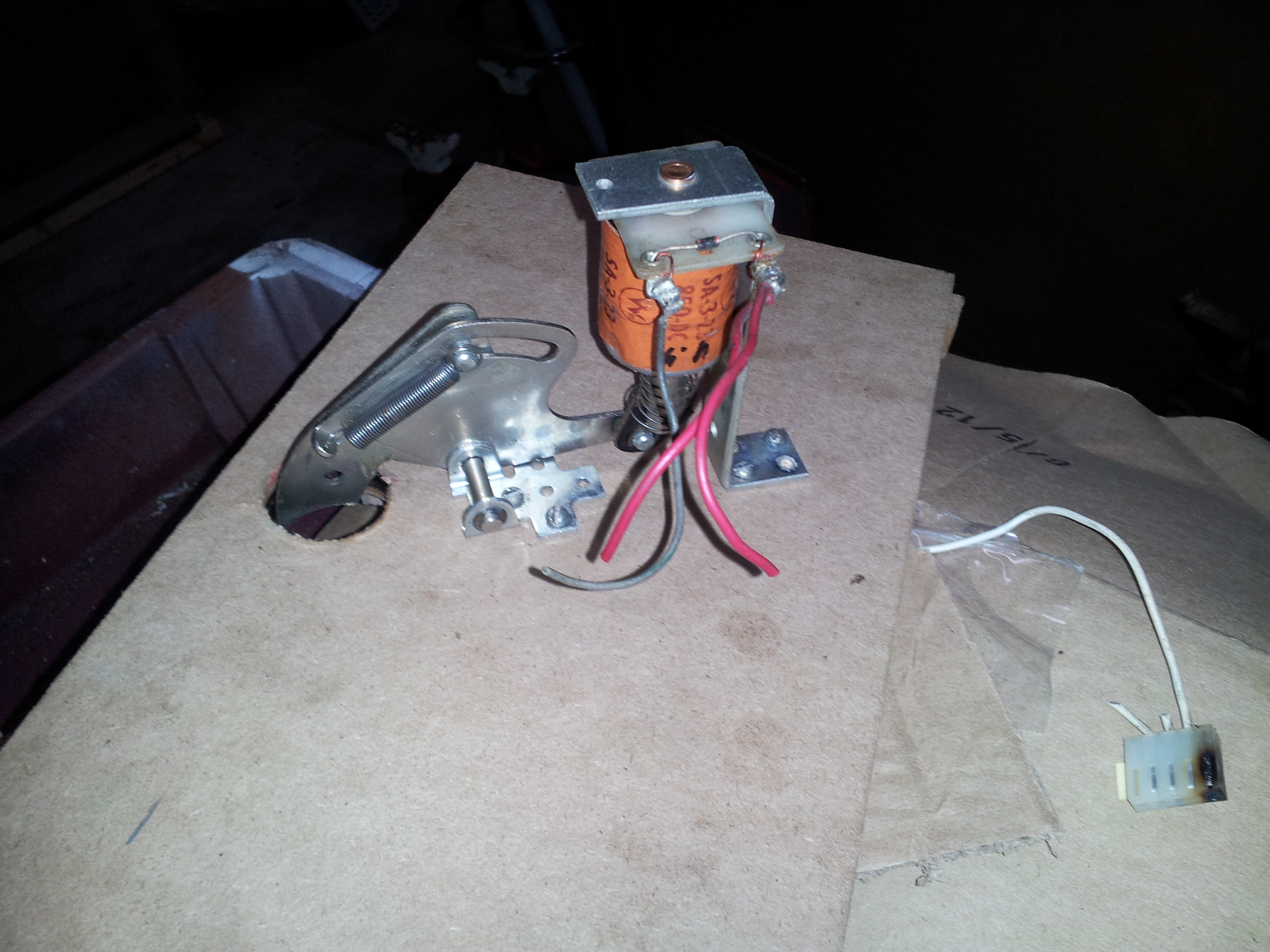
Using a small router and an 1/8" bit, I found that, as long as you go slowly, it can produce workable light insert holes
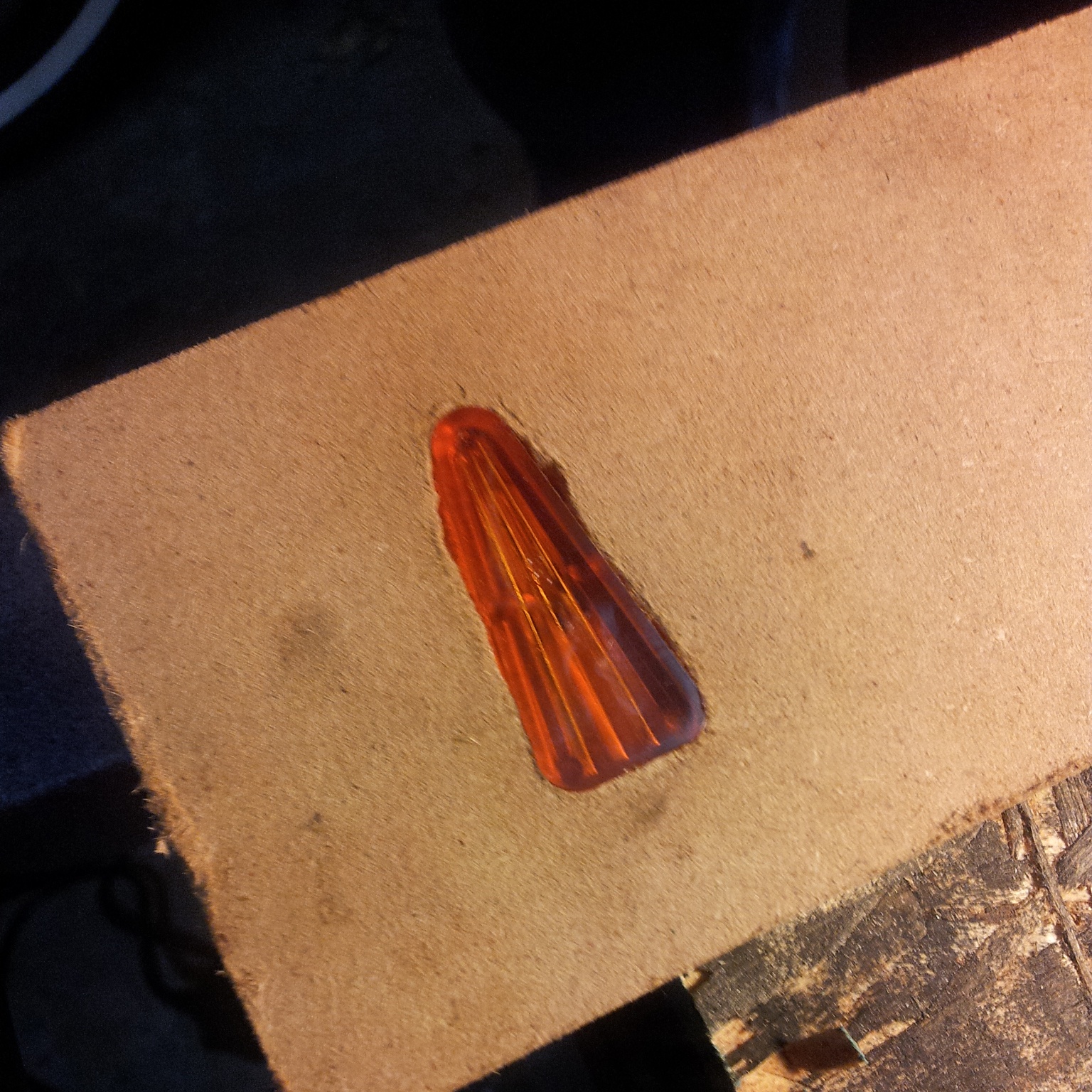
Since I couldn't find any launchers, I made one myself by welding a scoop to a piece of 0.5" iron stock and attaching some plastic to the front to guide it
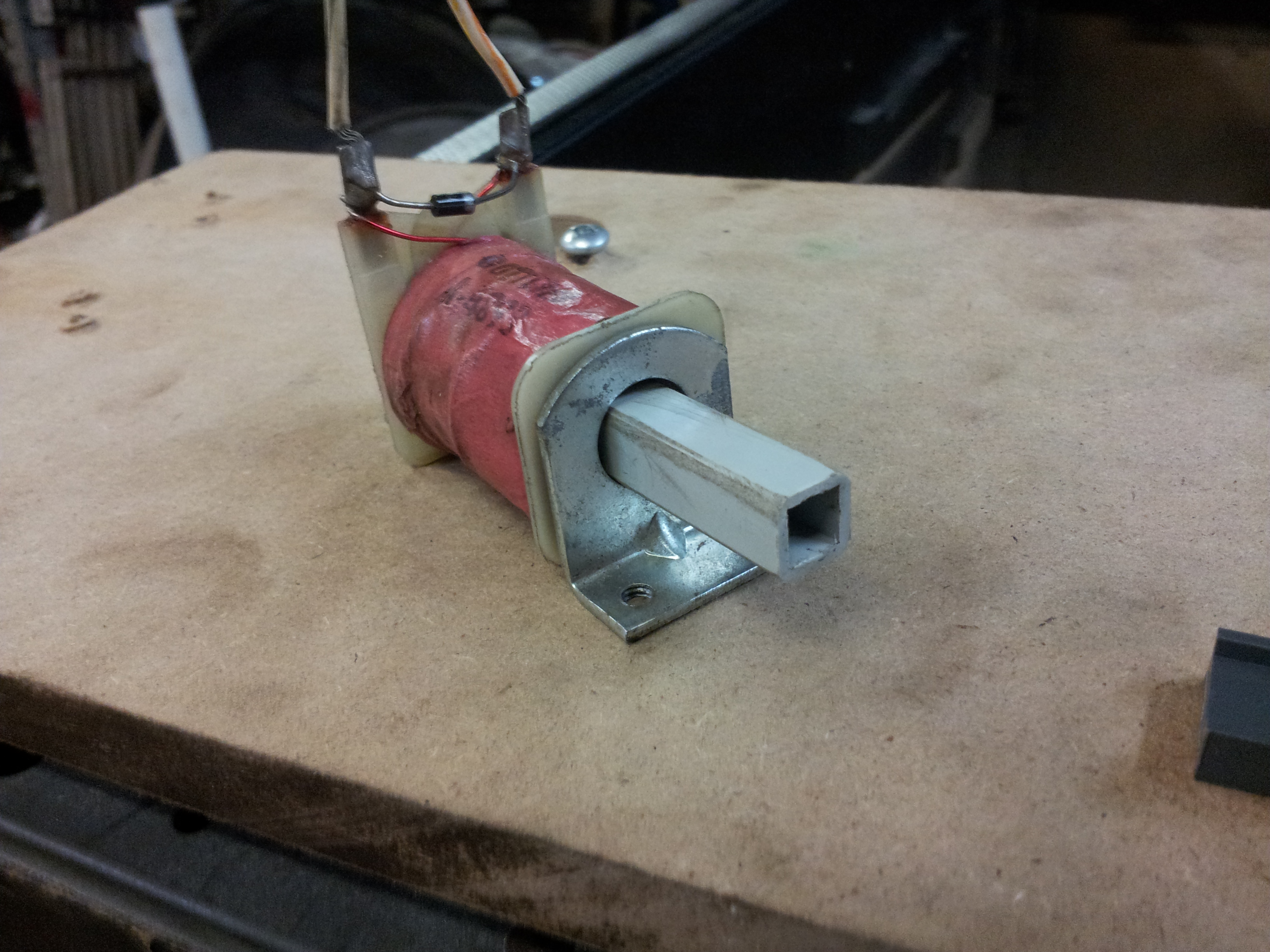
When you power the coil, it pulls the iron stock in, and the plastic guides it through
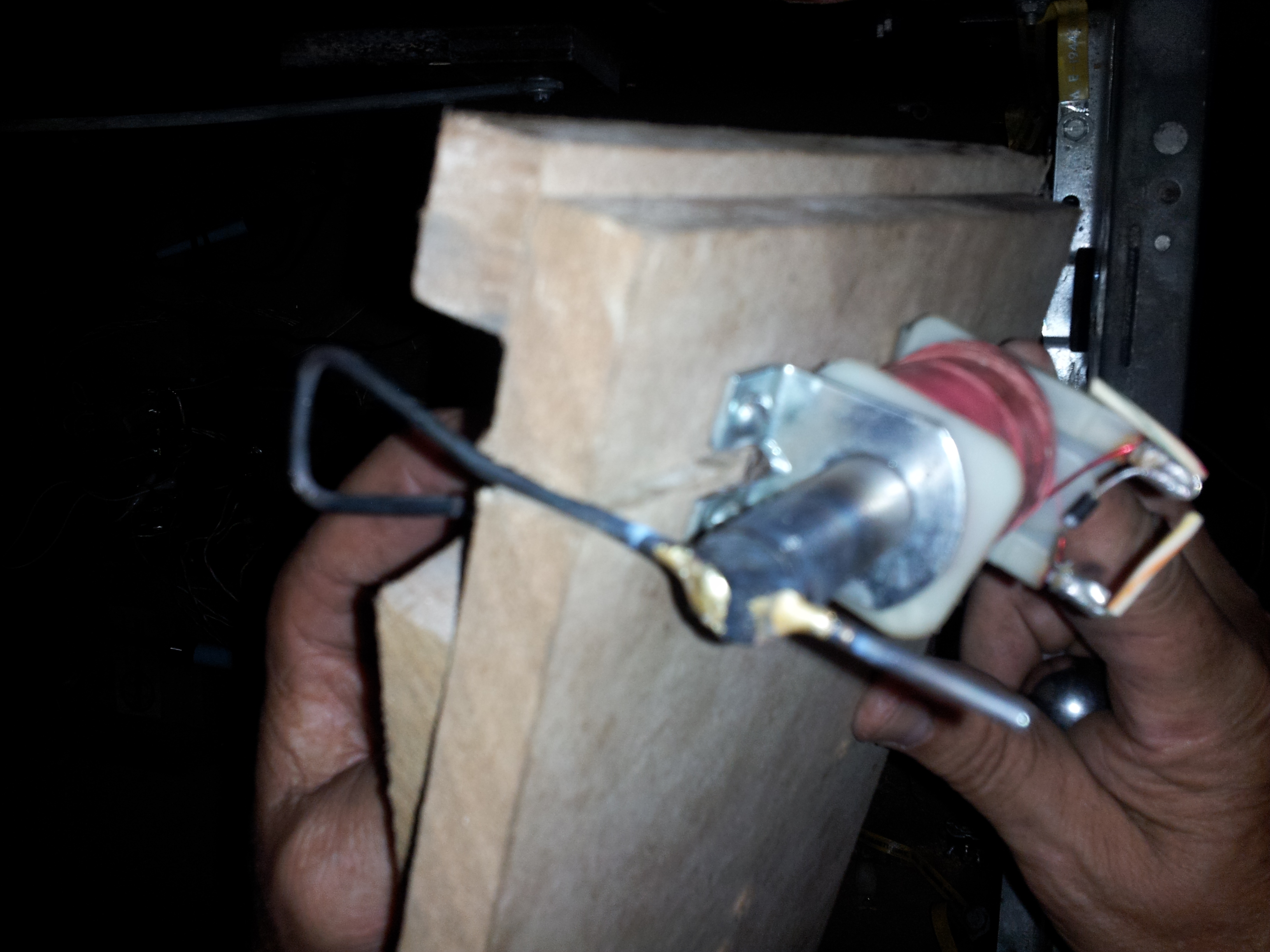
Pinball, pt 1: Parts
After two trips to the Allentown PinFest, I've managed to get together pretty much all the components I'll need for the build.
I got two boxes of assorted used parts for $20, and a ruined, half populated Spiderman playfield for $30, yielding an assortment of playfield parts:

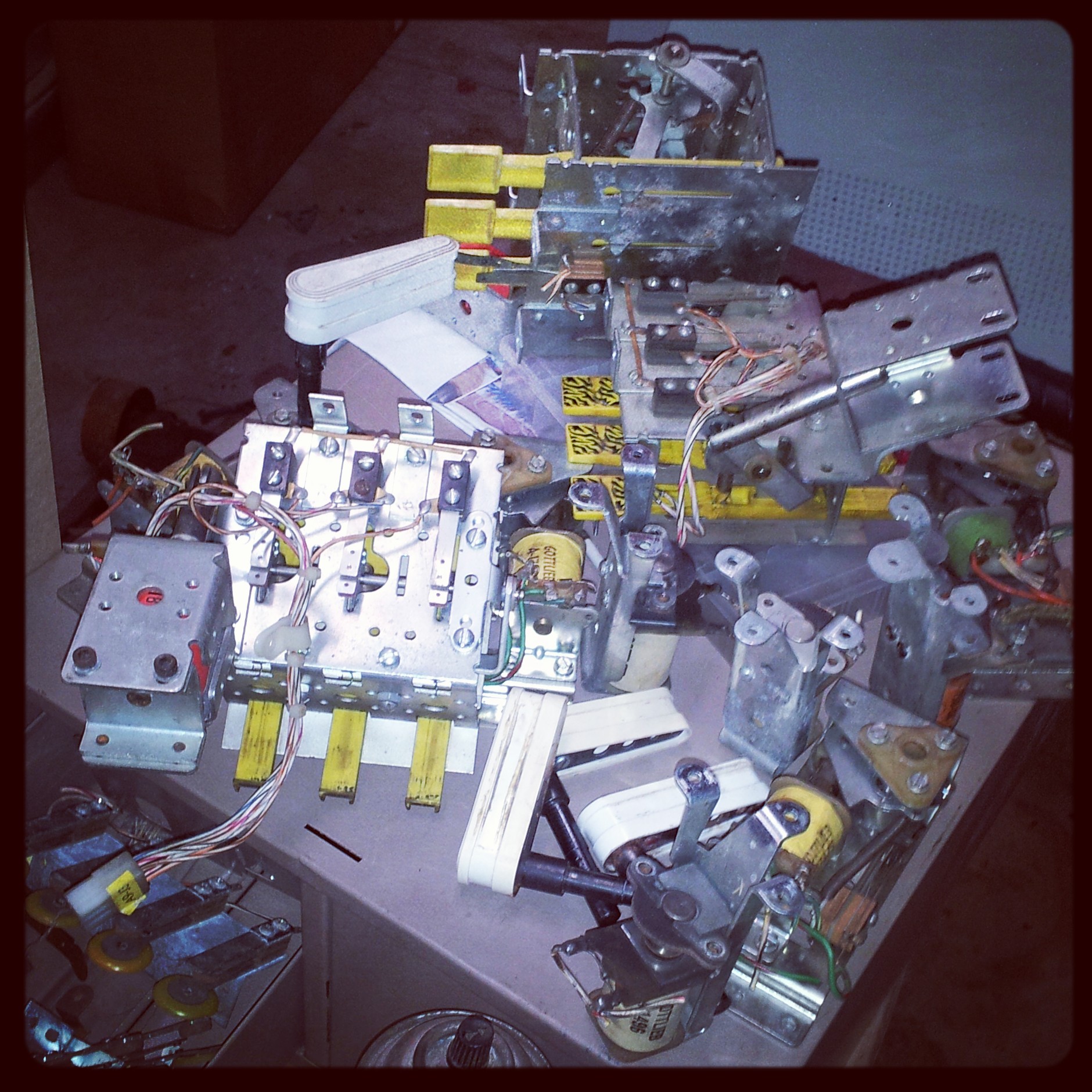
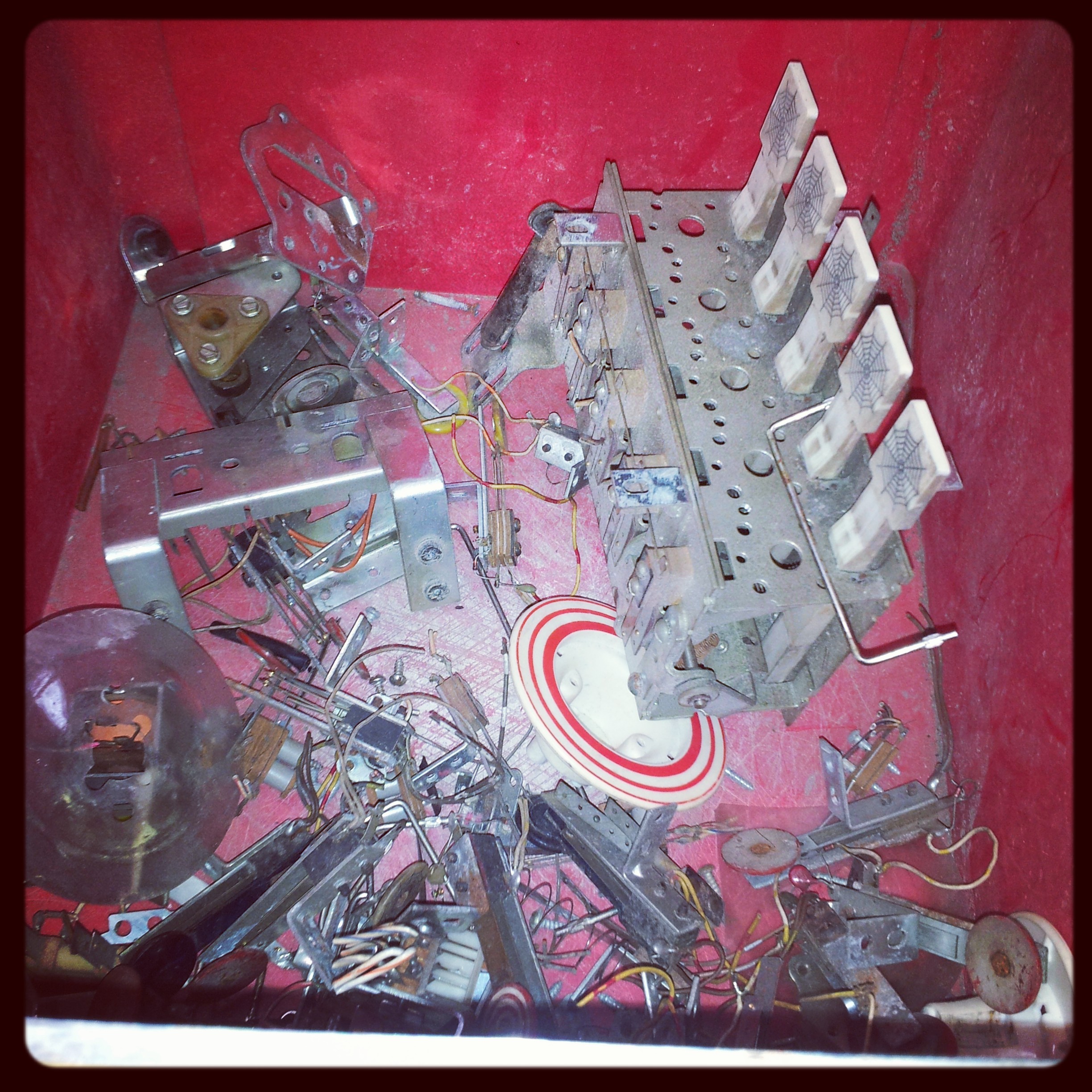
I also bought a head from a mysterious 4 player EM for $20:
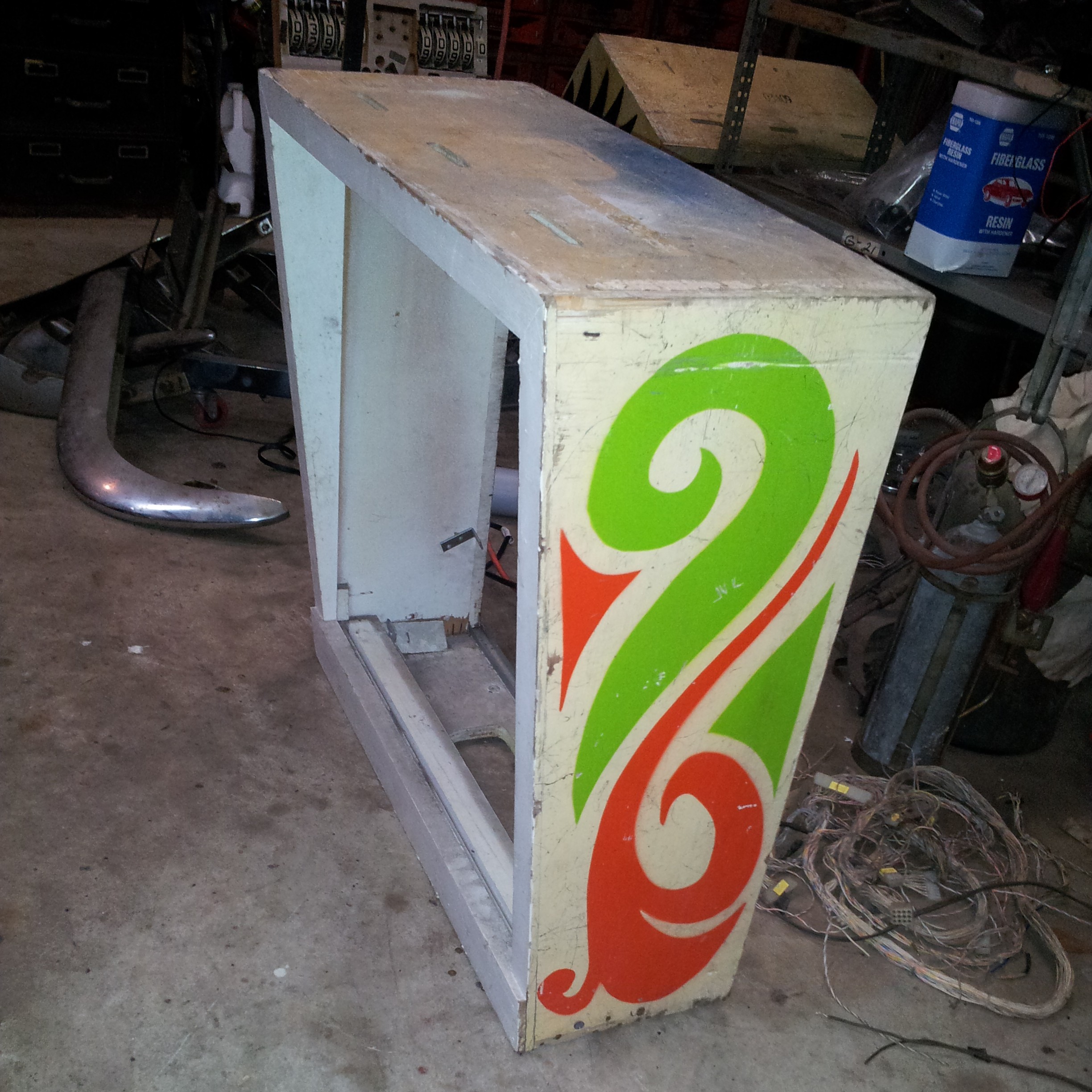
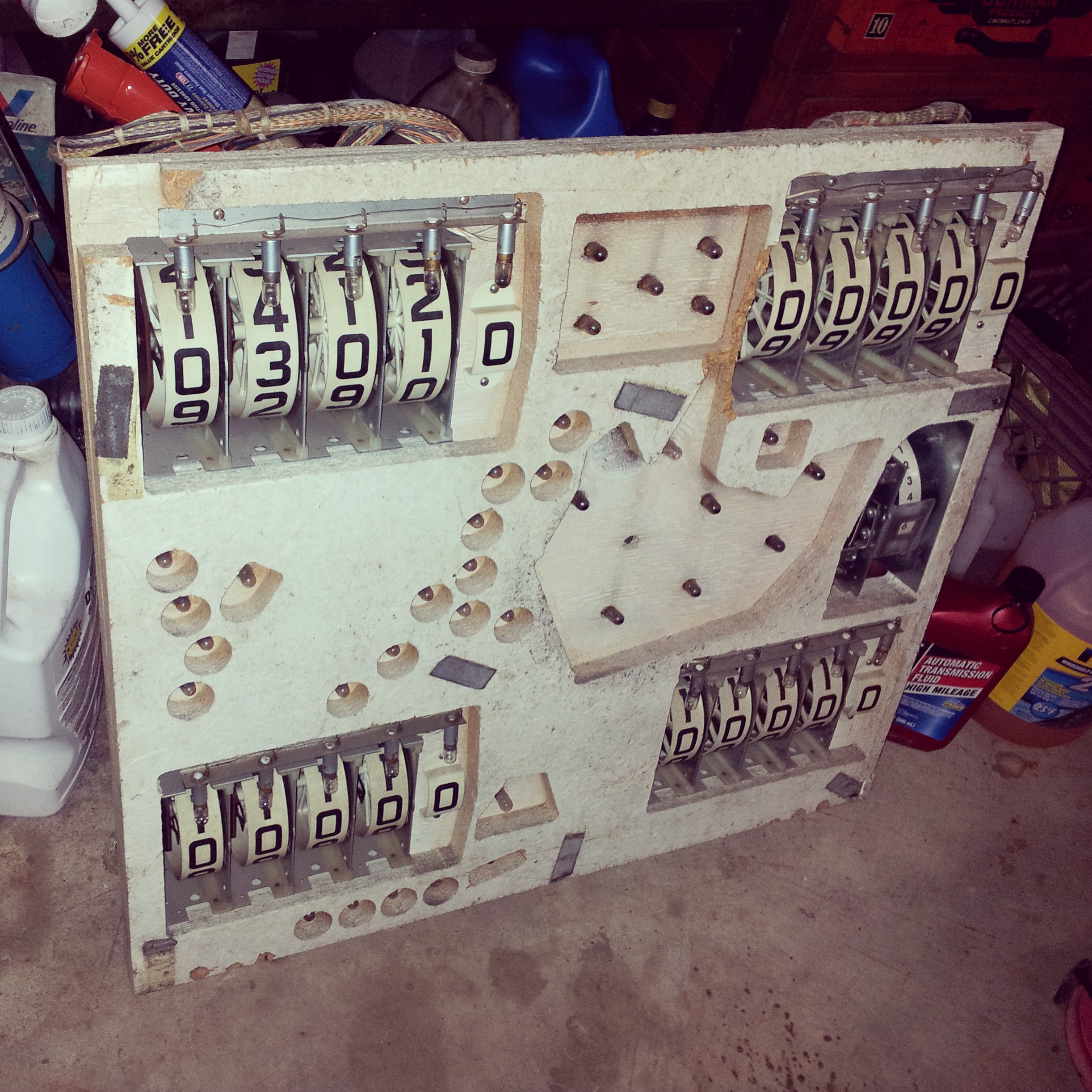
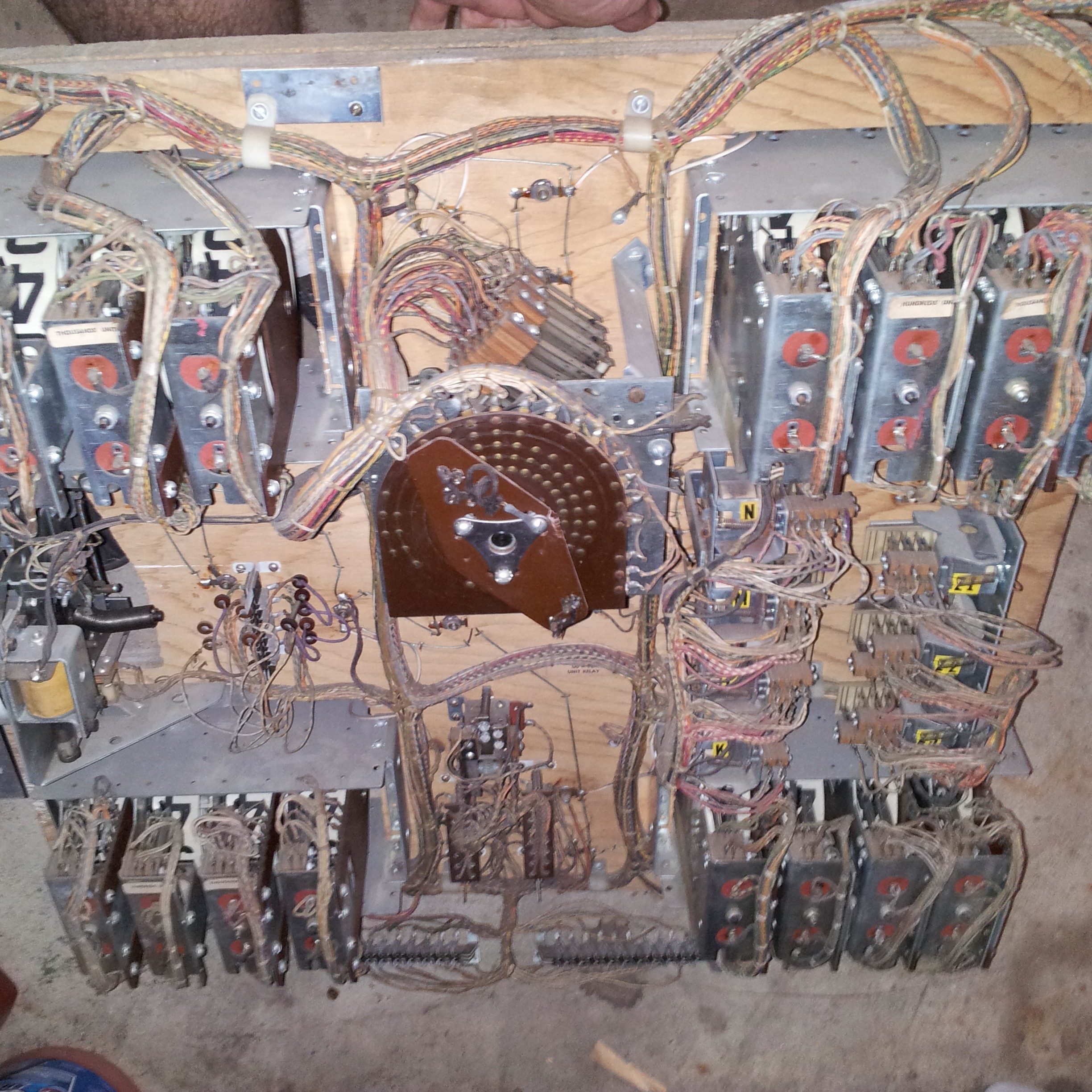
I really wasn't looking forward to the thought of trying to assemble a cabinet from scratch that would work with regular parts, but luckily I found this slightly beaten Spring Break cabinet for $15
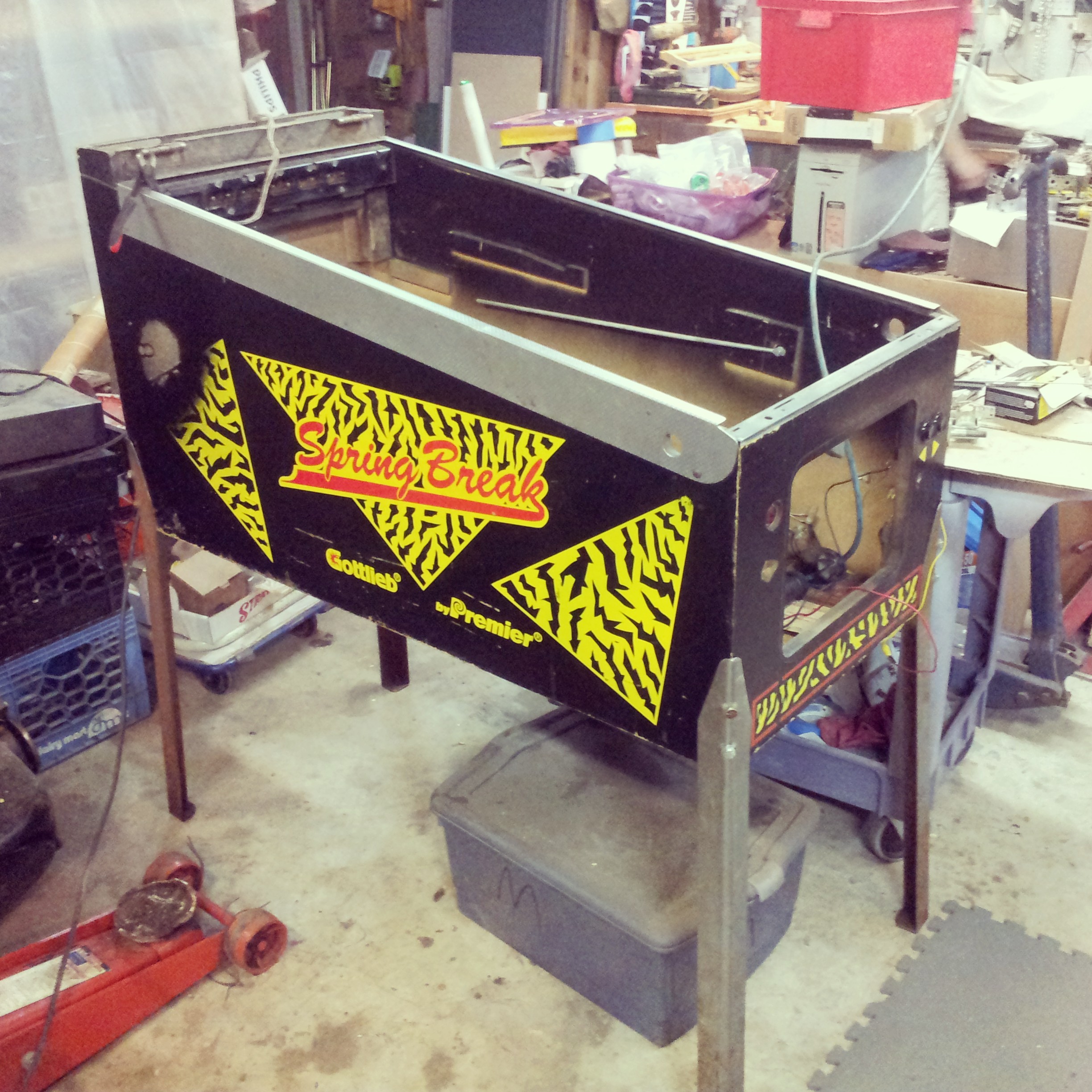
(the legs were separate, another $20)
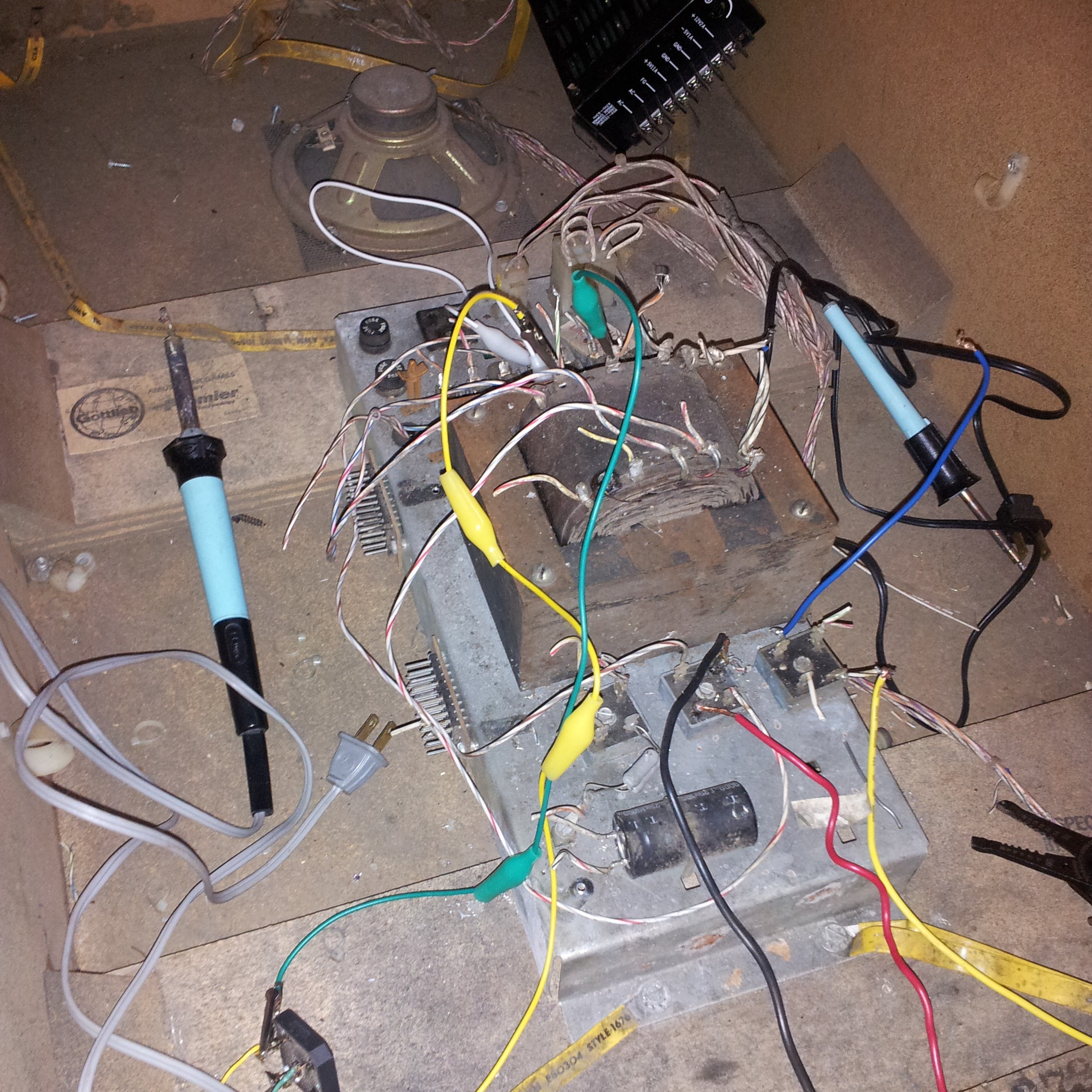
It even came with a working power supply, so I didn't need to worry about finding a 25-50V power supply. I was able to find a combination of taps that put out 28VDC after recification. Most non-EM pinball aficionados seem to think that 50V+ is the way to go, but honestly the flippers seem just as strong on my 25V games as my 50V.
Pinball, pt 3: Electronics
I put in an order to Digikey for $70 (!) of electronics, including some high power MOSFETs for the solenoid drivers:
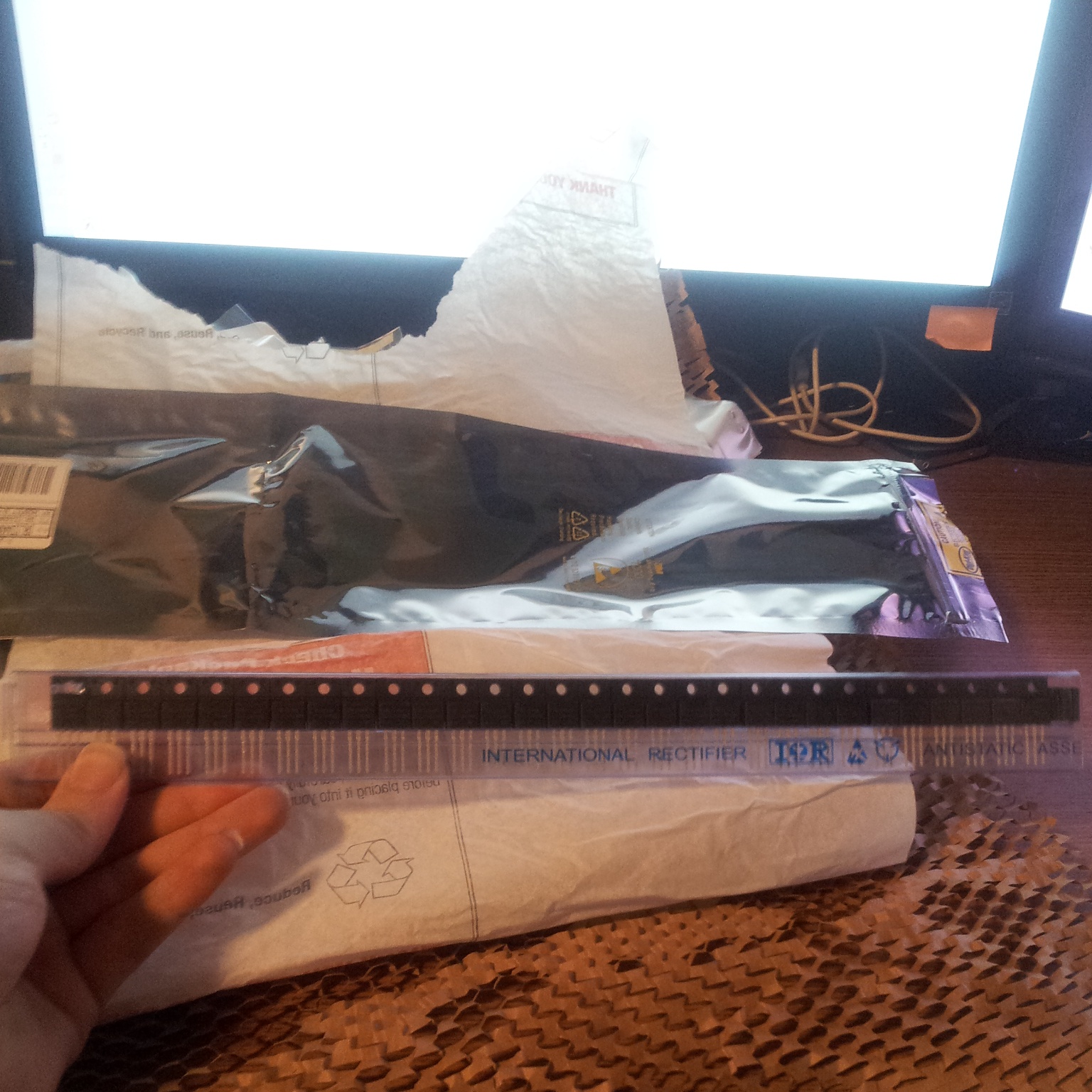
, some serial LED drivers, some serial input multiplexers,
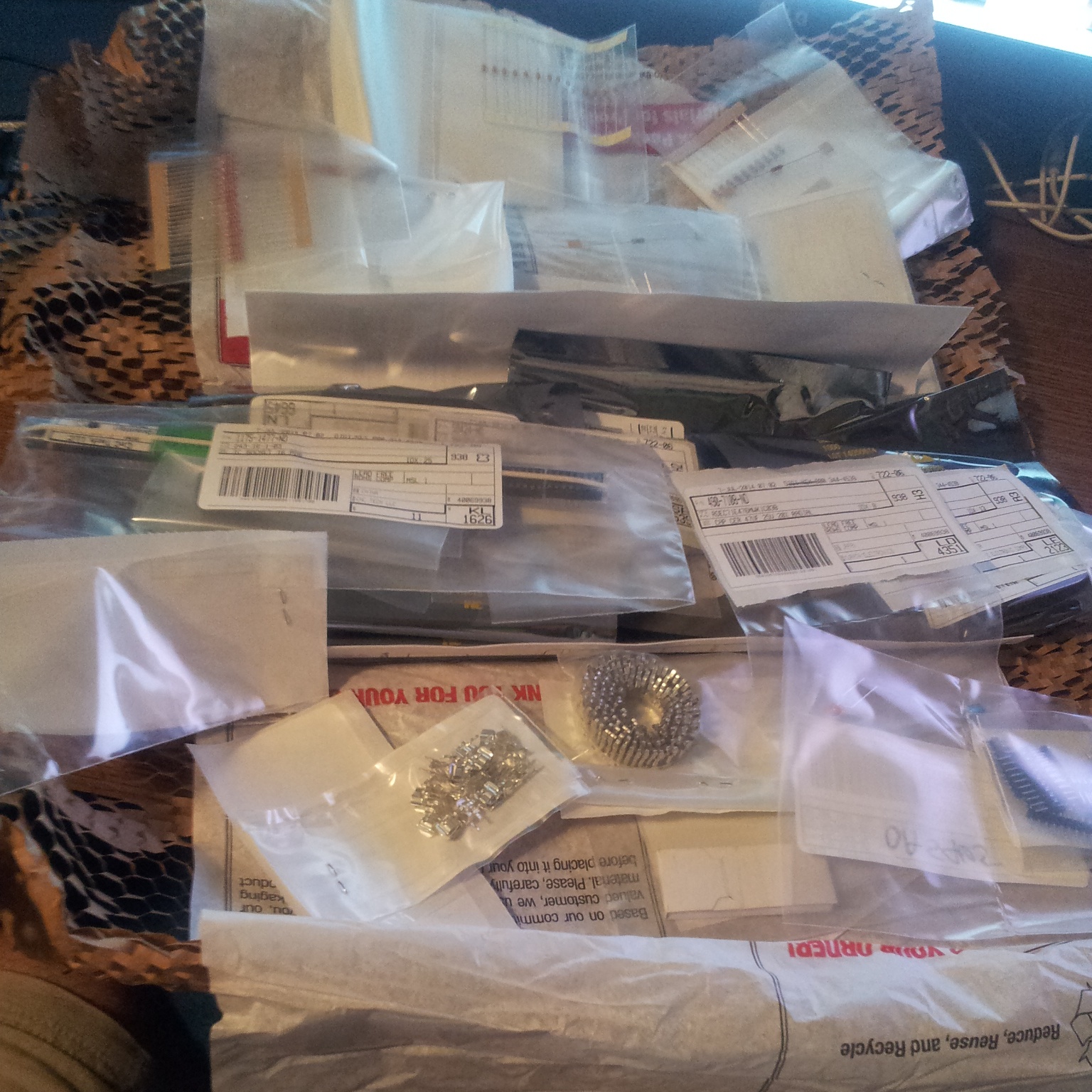
, some parts for making molex connectors,
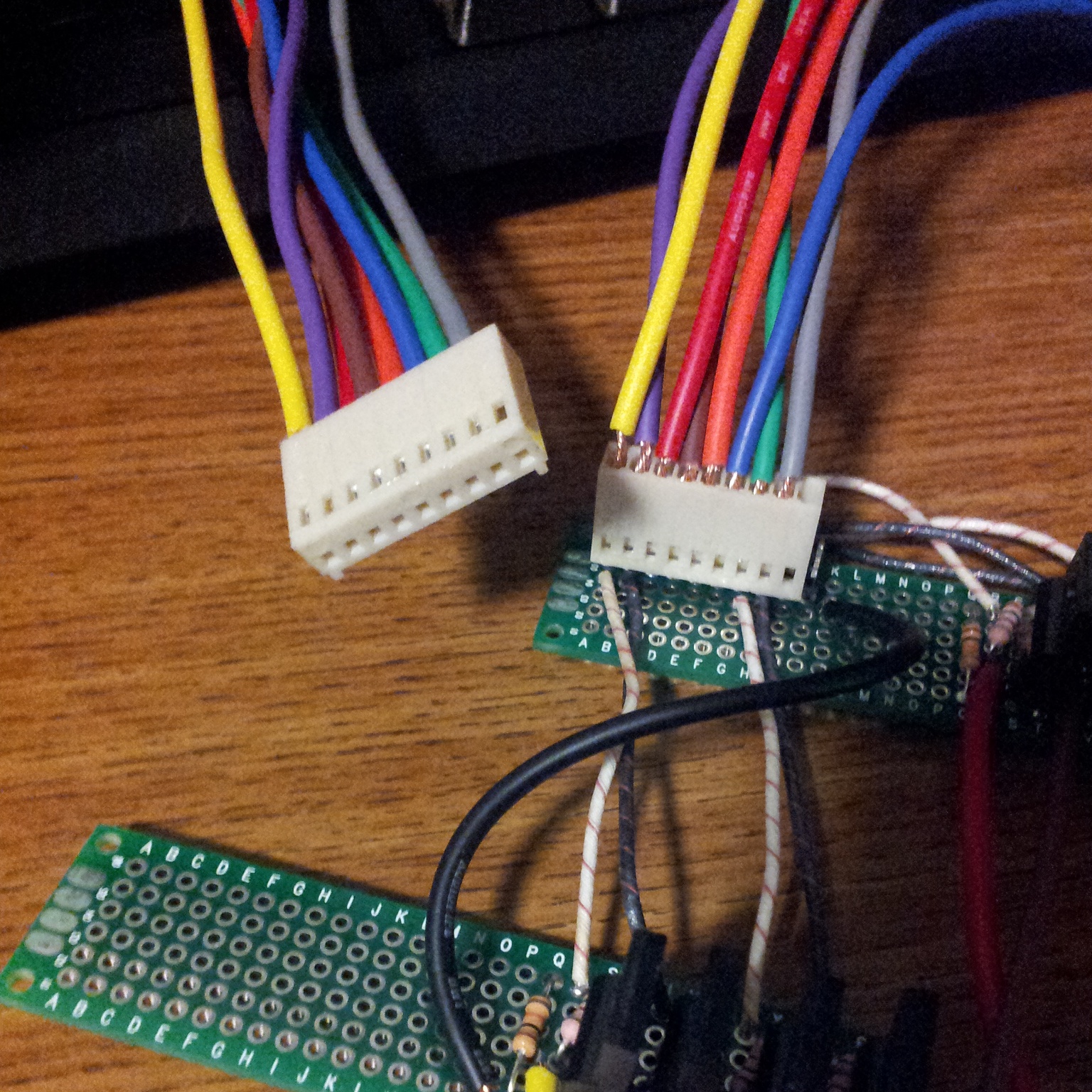
, three CPU boards (basically cheaper, more powerful, lower level Arduinos),
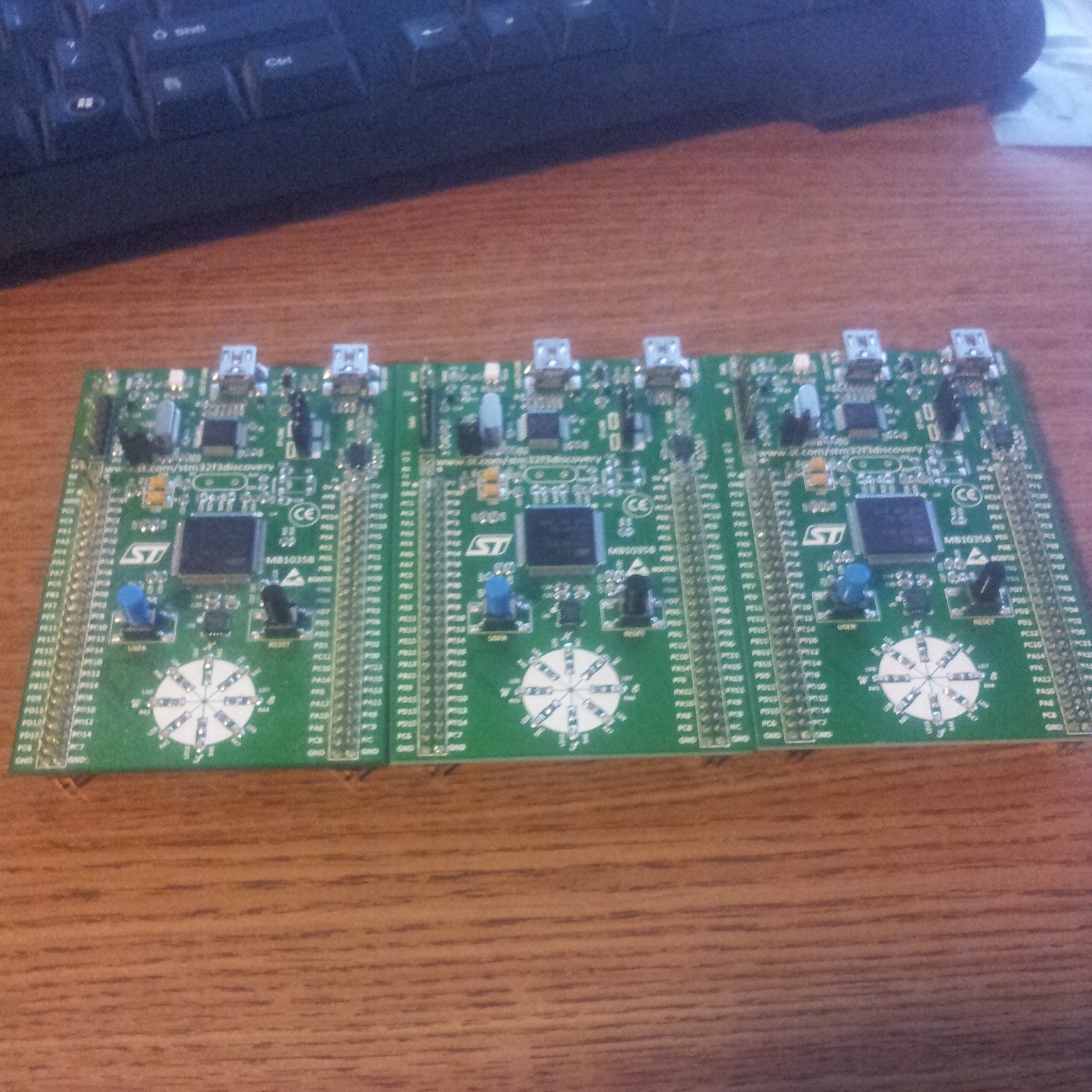
...and a ton of stuff for audio output, including this surface mount op-amp, which turned out to be *really tiny*
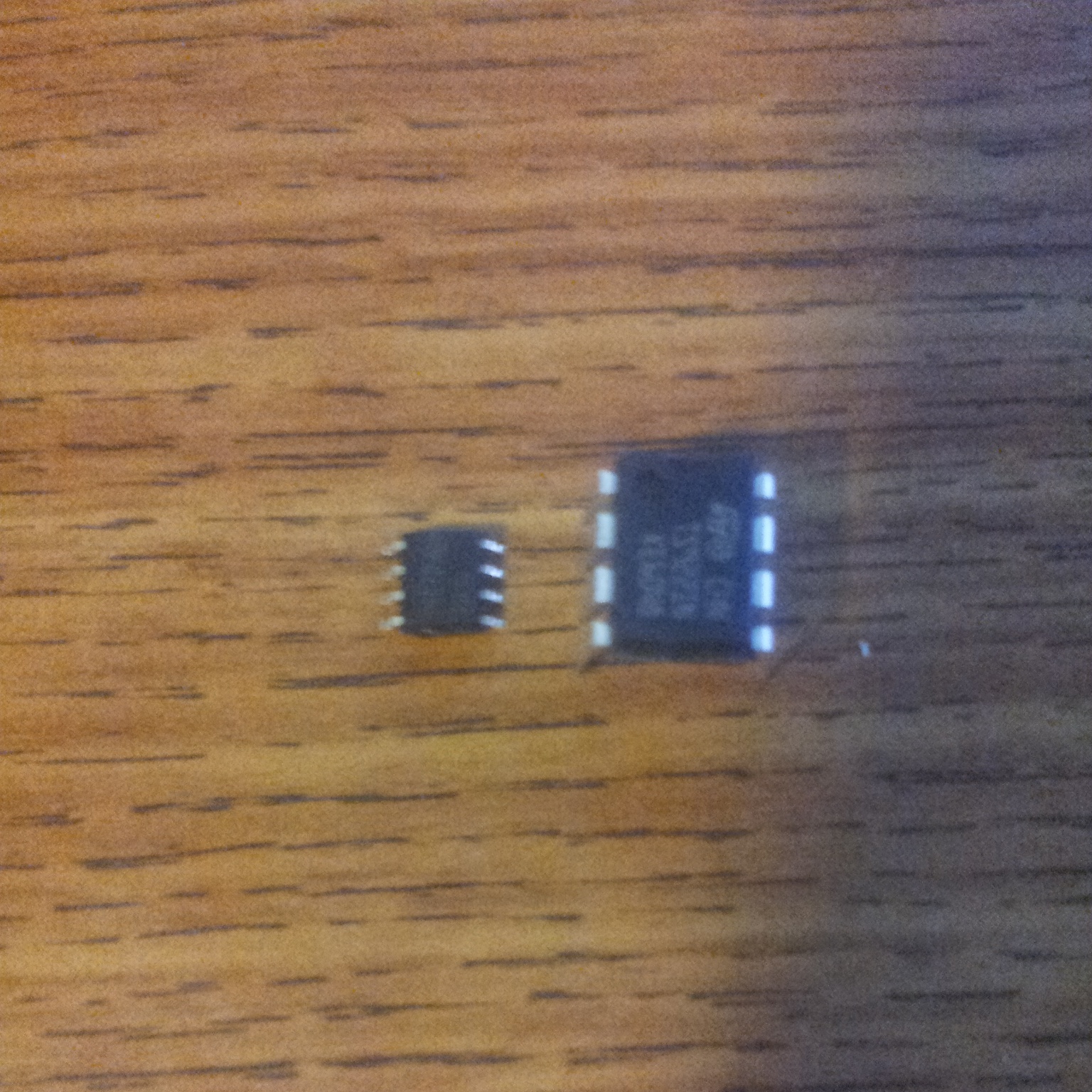
I made some nice compact solenoid driver boards
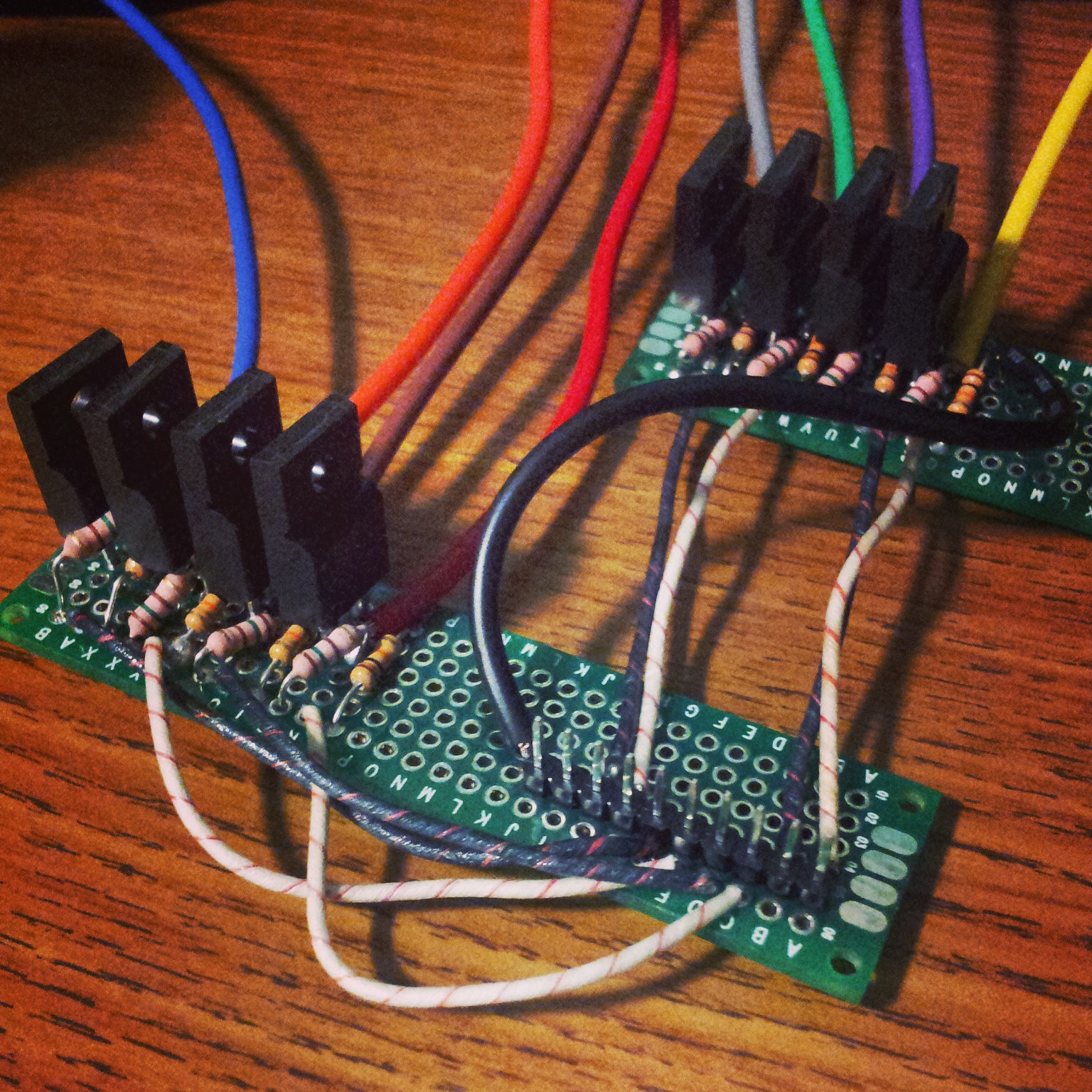
Looking at schematics for actual machines they've got all kinds of weird stuff, however just a MOSFET, two resistors, and a line to the CPU were enough to fire the solenoids just fine. I wish I had some way to turn them off in case the CPU locks up while one is turned on, but I don't know what that would be, and as far as I can tell 'professional' machines don't do it either.
